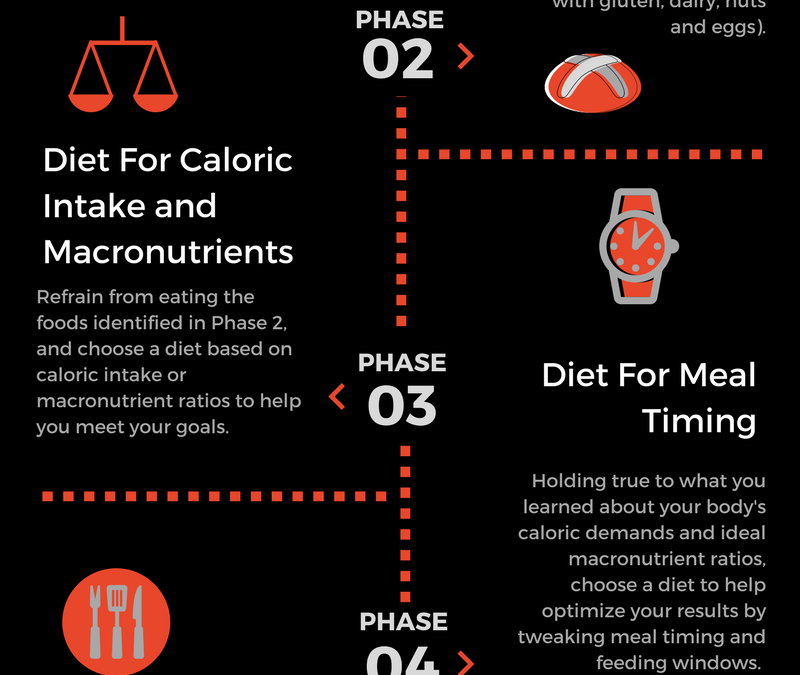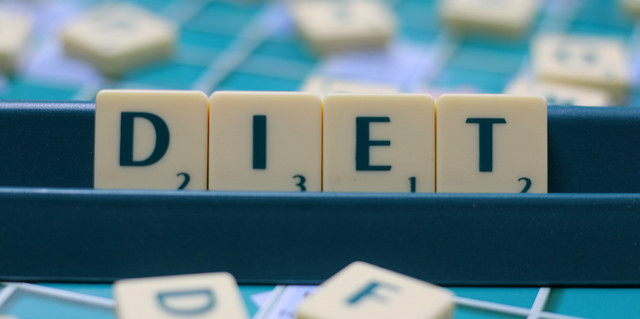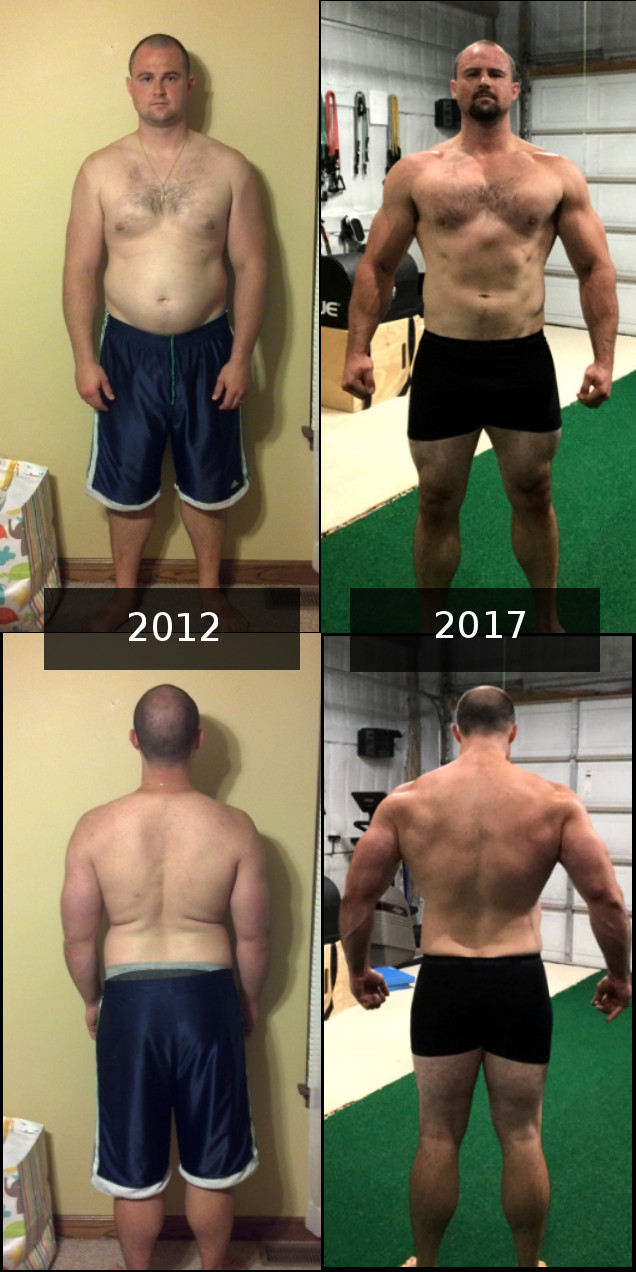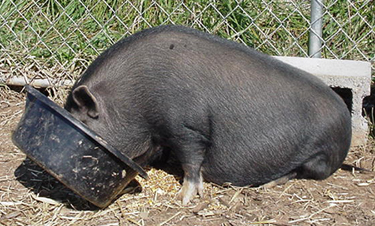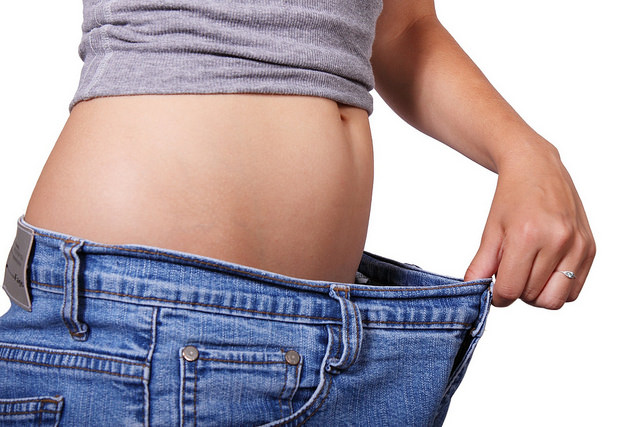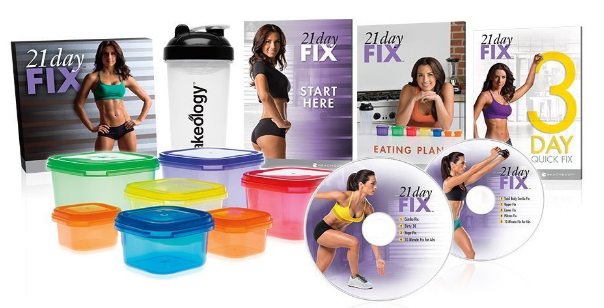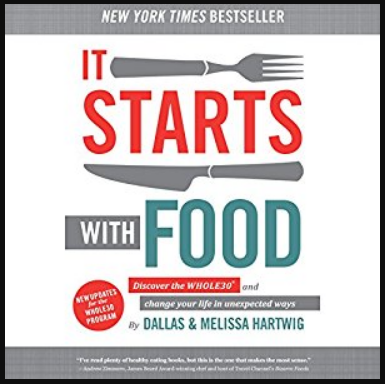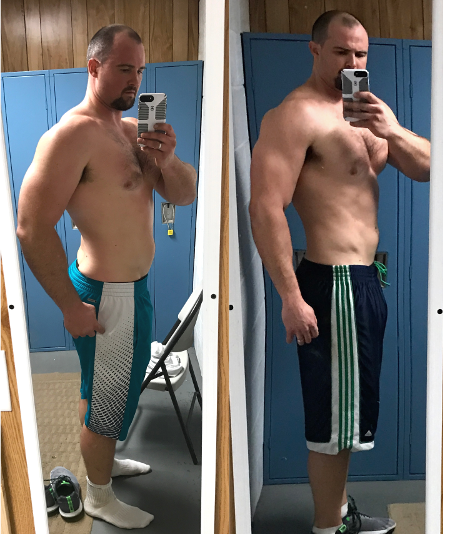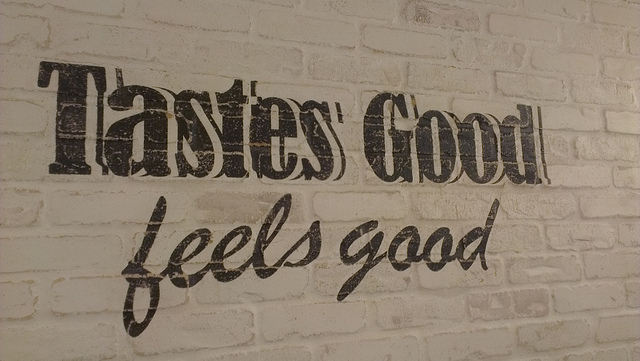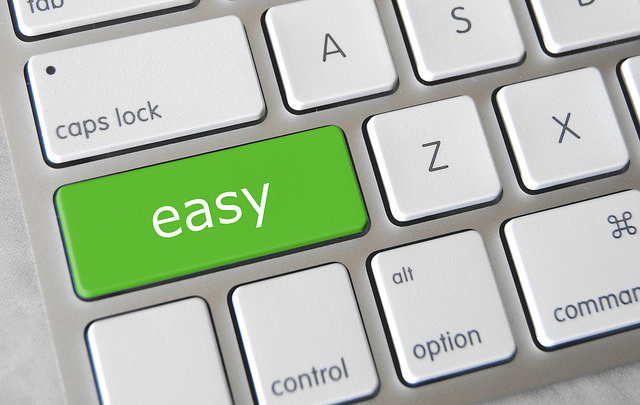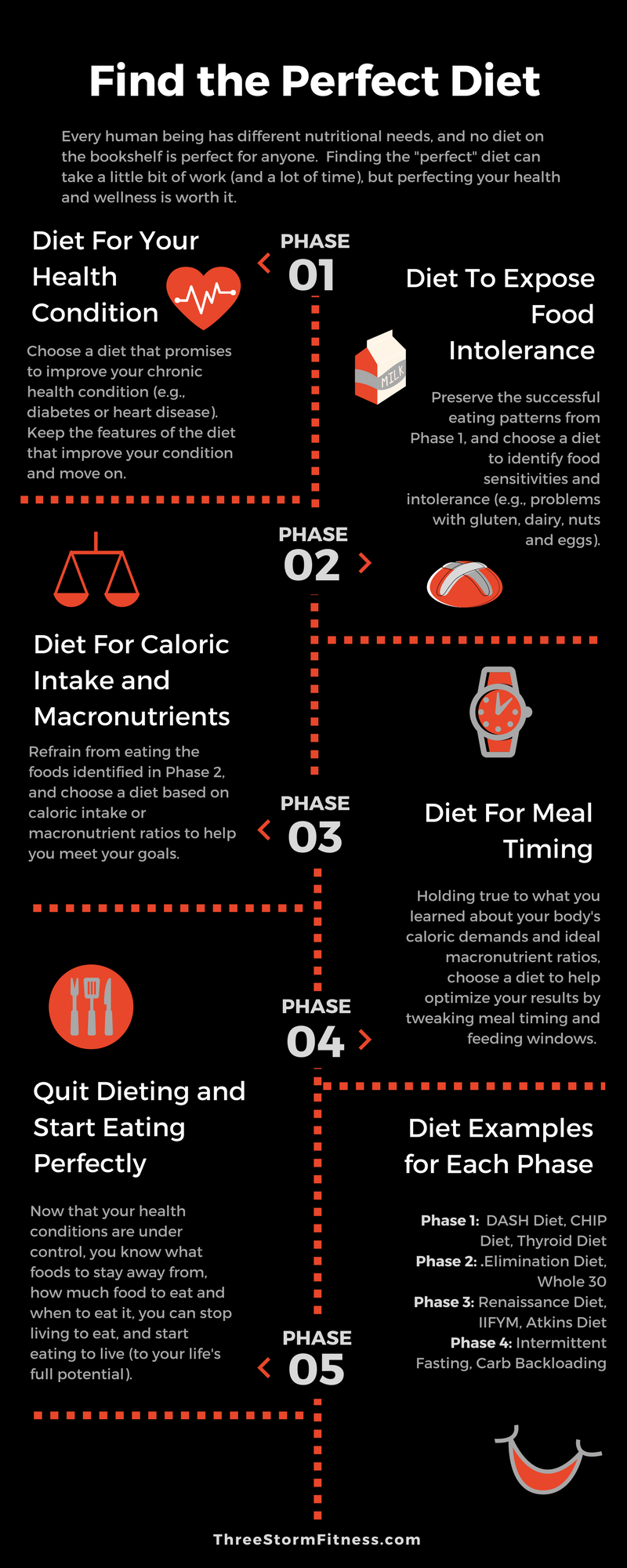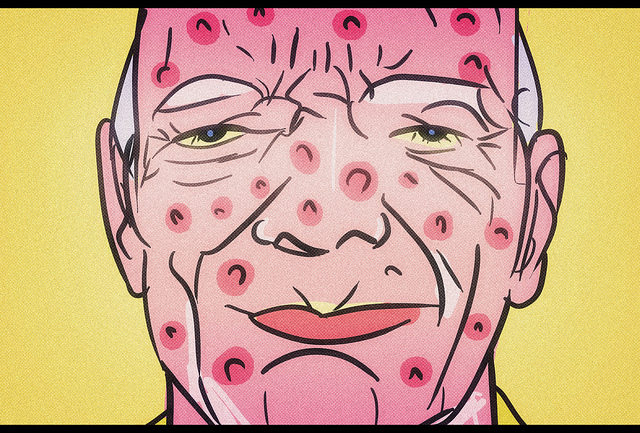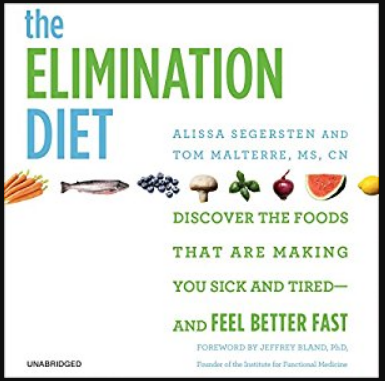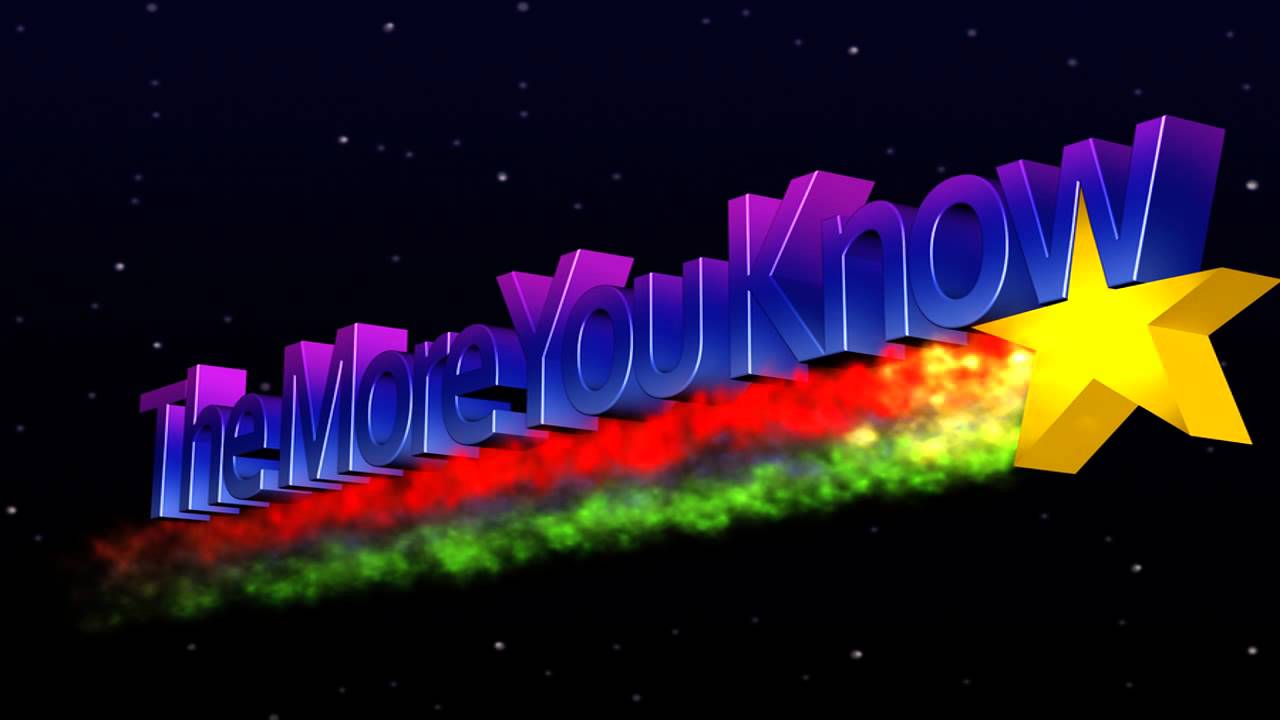Synopsis
This post is ridiculously long (it’s over 3000 words longer than The Boxcar Children junior novel), and the thought of someone making time in their day to read the whole thing makes me sad. In case you’d rather listen, here’s an amateur recording of me reading it.
If you don’t have time to read or listen to it (or hate the sound of my voice), here’s the skinny:
I open with a joke that is just barely a joke, and just barely relevant. It is, however, extremely long.
Regardless of your goals (i.e., fat loss, muscle building, performance, inflammation control, libido, longevity, etc), nutrition must always be a top priority, if not, the top priority; no exceptions.
Knowing how to eat is an essential skill that every human should posses. Expert guidance can be beneficial, but no one is going to eat for you.
Everyone is completely different, and no eating pattern is perfect for anybody.
Use dieting, not as an answer to your problems, but as a diagnostic tool to teach you what works for your life/body, and what doesn’t. In other words, view each diet as a training class; even an experimental study.
In other-other words, “use” diets, don’t “try” diets.
Go on as many diets as it takes to make you feel confident in your ability to make sound nutritional decisions. This could be a one-time go, or a lifelong process; this just depends on your lifestyle/biological complexity and ambitions as an individual.
It’s important to choose a diet that fits your goals, but the ultimate underlying driver should be how it makes you feel. Prioritize this factor above all else.
There’s nothing wrong with seeking expert advice. If you get stuck, or can’t get over the hurdle of starting, consult a functional medicine practitioner or a registered dietician to help fill in the blanks…just make sure you stay in control.
Here’s my personal dieting journey and how I’ve arrived at my current eating patterns. It’s not necessarily a good example of how you should do it (good examples are covered later)…it just is what it is:
- I ate huge amounts of protein-packed calories, with no real guidance other than a handful of bodybuilding forum posts in order to pack on muscle.
- I attempted to revisit the same diet over the course of the following decade and experienced diminishing results due to a variety of reasons.
- I tailored my macronutrient ratios in order to achieve a desired body composition change.
- I lost weight in order to qualify for a life insurance premium rate by completing the 21 Day Fix calorie deficit strategy.
- I kept the weight off with intermittent fasting.
- I used Tim Ferriss’ Slow Carb Diet (and enjoyed insane cheat days).
- I used the Whole 30 diet to identify my enigmatic lactose intolerance symptoms.
- I used carb restriction and meal timing tweaks to shed body fat.
- I include a description of my current diet, which is a conglomeration of the bullets above.
I discuss the importance of paying attention to how you feel, and how it relates to your diet. More specifically, how changes in your diet affect can everything from bowel movements to your love life (but hopefully not a mix of the two…not that there’s anything wrong with that), and how you can critically observe those change through methods such as journaling.
In my opinion, paying mind to how you feel is more important than losing inches or hitting a PR under the barbell. This is nearly a moot point, however, as allowing “how you feel” to navigate your eating patterns and diet selection typically produces positive performance and aesthetic results anyway.
Furthermore, I discuss how to use diets as diagnostic tools, as well as how to Google stuff (I owe a significant portion of my current quality of life–as an IT professional, personal trainer, and human being–to this critically important skill. I also owe a significant portion of my job security to the majority of Internet users who refuse to acquire this simple skill).
Like any skill, eating healthy gets easier as you strive toward the perfect diet. Don’t give up.
I recommend everyone practice the following dieting road map if they’re struggling with nutrition. Repeat this phased approach as often as necessary, and expect some overlap between phases. Presented in order:
- Phase #1: Experiment with a diet that treats or alleviates symptoms of a serious health condition first.
- Phase #2: Choose a diet helps identify food intolerance (i.e., those that trigger autoimmune responses like Celiac disease–which, if already known, could be addressed in Phase #1). Food intolerance is on a spectrum, and most people don’t realize they have one. Perform your due diligence here before moving on.
- Phase #3: Augment your diet with macronutrient ratios, and/or the inclusion or restriction of certain foods. General caloric surpluses and deficits also fall into this phase. This can include anything from IIFYM (If It Fits Your Macros) to Weight Watchers; ketosis to fruitarianism.
- Phase #4: Tweak meal timing. Examples include carb-backloading and intermittent fasting.
I offer an extensive example, which illustrates how to combine everything that you learn from the aforementioned phases, and establish a comfortable, sustainable, and healthy eating pattern (i.e., the “perfect diet”).
Adhere to the following ground rules when choosing a diet and applying it to your life (I go into detail on each one):
- Choose a dieting program that fits your goals
- Choose one that you know won’t hurt or kill you
- Choose a program that has a following
- Complete the program
- Actually follow the program
- Read the book
- Get a roomie to do it with you
- Get used to eating things you don’t currently like eating
- Prep!
- Keep a food log
- If possible, don’t completely eliminate entire food groups
- Drink lots of water
- Eat plenty of protein
- Try the diet for at least 30 days
- Stay away from refined sugar
Finally, I acknowledge the importance of using blood, saliva, feces and urine testing to help ease and expedite your journey through the four phases.
You’re still with me? Cool. Let’s begin.
[activecampaign form=1]The Joke
I’ve been training people in a professional capacity for a few years now, and one thing I’ve picked up on is that trainers are the butt of a terrible joke.
A note to my clients: this joke is in no way is a reflection of my feelings toward you. Please know that I have an intrinsic need to occasionally be an A-hole, and my writing is the only outlet in which I feel comfortable doing so. I love and appreciate all of you.
Here it is:
A moderately obese man walks into a gym. A trainer says, “Hey, what can I get ya?”.
The moderately obese man says, “I wanna lose this”, he grabs about five pounds of jolly midsection in each fist.
The trainer says, “Oh yeh, guy, I can help ya with that”.
“Great, what do I need to do?”, the moderately obese man asks.
“First, you need to start eating right, assuming you aren’t already”, the trainer says as he playfully pokes his potential new client in the belly. The poke causes the moderately obese man to audibly pass gas, and they both laugh for several minutes.
The trainer continues, “I’m not a registered dietician, so I can’t tell you what to eat. In our lovely state of Ohio, you could sue the pants off of me and I wouldn’t have a single legal leaf to cover up with.
“Also, sir, did you you know that in some states, not only are personal trainers not protected when they prescribe nutrition plans to their clients, but it’s actually illegal to call themselves dietitians?
“In other states, however, it’s a total free-for-all. Personal trainers can hold their clients down, and force feed them whatever they want.
“Unfortunately, we don’t live in one of those beautiful states”, he says with a sigh, as he wipes a welling tear from his left eye.
“I’ll tell you what we can do though”, he continues, “log your food for the next week, and we’ll go over it together, and try to identify areas of improvement.
“If that sounds like an insurmountable task, here are two pages of literature with pictures to give you a simple idea of what healthy eating looks like.
“If you don’t know how to read, might I suggest a registered dietician or functional medicine practitioner to help steer you down a nutritional road to success?
“Sleep is also critical for fat loss, but that doesn’t quite fit the scope of the joke we’re inside of right now.
“I’ll develop a resistance training program for you to help you build a little muscle. Muscle will increase your resting metabolic rate, insulin sensitivity, and give you some shape…a shape other than ‘loose pear’.
“Just to reiterate: You’ll lose the majority of your fat by adopting a cleaner diet. Eventually–and you have to patiently maintain discipline–the muscle that you build from resistance training will help elevate your body’s fat burning potential.
“The exercises that I assist you with will not make you burn fat all by themselves. Exercise definitely burns calories, and elevated oxygen consumption after a strenuous workout can increase post-exercise metabolism by as much as 15%. That said, the one to three hours you spend with me every week does not give you a free pass to be eat with abandon.
“You with me so far?”.
The moderately obese man answered, “Yes, you’re clear as melted butter on a cold hot cocoa morning”.
The trainer asked, “Wait, does that mean you understand?”.
The moderately obese man nodded. Unfortunately, what the trainer didn’t know was that the moderately obese man wasn’t actually listening. He was just nodding in agreement with himself that sausage links wrapped in pancakes are awesome…so are hamburgers on glazed doughnuts. Anyone who doesn’t think so is a coward.
Our joke continues three months later…
The moderately obese man (yes, still moderate), and the trainer have worked together for two one-hour sessions per week.
The still moderately obese man was significantly stronger than he was previously. He moved better, had greater range of motion, and higher cardiovascular and muscular endurance than ever. If he went to the doctor, he would also know that his cholesterol and triglyceride levels were the best they had been in five years.
Unfortunately, however, he hadn’t lost a single pound of body fat.
The still moderately obese man was very upset by his perceived lack of progress.
He had worked his butt off over the last three months for almost two hours a week, and didn’t have a single six pack to show for it.
Frustrated, he stormed up to the front desk, and demanded an explanation from the trainer.
The trainer reminded him that he never logged his diet for review, and he used the “healthy eating” literature that he gave him as a napkin. He also pointed out for the seventh time that holding the sprinkles on his banana split was only a small part of the journey.
Reminded by his love for sprinkles–and the fact that he had gone without them for the last 12 weeks, only to be stuck with the same loose-pear-shaped body–he boiled with rage.
He grabbed the trainer by the shirt collar, and threw him out the front door of the gym. The trainer rolled like a rag doll into the parking lot. The trainer–a bonafide altruist–beamed with pride over his client’s newfound strength.
Without even a second to recover from the violent event, a car struck the trainer from behind, and shattered his tail bone. The impact also damaged his colon (side note: the surgeons had to give him three butt holes in order to save his digestive function).
Our joke continues two months later…
The formerly moderately obese man–now just barely obese (he didn’t like the taste of the prison food)–shared a cell with a high school English teacher. His new cellmate asked him what he was in for…actually, he asked him “for what he was in”.
The now just barely obese man answered, “I got mad and pushed my personal trainer into traffic. A car broke his butt hole”.
“Rectum”, the teacher corrected.
“Wrecked him?!”, the just barely moderately obese man said. “Damn near killed him!”.
How to Find the Perfect Diet

People have been trying to find the perfect diet for hundreds of years.
They used to think it was in space. It’s not.
This document isn’t really about the struggles that personal trainers experience while getting their clients to eat right. Nor is it about clients assaulting their trainers.
It’s neither about sprinkles, nor multi-barrelled butts; nothing that sophisticated.
It’s simply a collection of my thoughts and opinions on how people should approach their diet.
That “joke” you read above…I pretty much made it up as I went. I had no idea how it was going to start or end, or if it was even going to be a joke. I basically just went on a rant and stapled an actual joke bit to beginning and end of it. That was obvious, right?
That’s worth pointing out early because this entire post is going to be written in similar fashion (i.e., an 8th grade health teacher would definitely fail me if this was an essay on general nutrition). It’s more philosophy than fact.
Normally, when approaching a topic of this breadth, I would create a structured outline, and prepare well-researched external studies and documentation to backup my arguments.
I actually spent a few days making said preparations for this article…but I’m not going to use them, at least not explicitly.
There are so many freaking research papers and cherry-picked data available that both support and disprove every claim out there. If you want an academic document, where every other paragraph is backed by a peer-reviewed study, read stuff like this:
I decided that a document guided by anecdotal experience and general Tomfoolery would serve as more authentic content…from this “author” anyway.
Having said that, I’ve taken many deep dives into nutritional information over the last 15 years, and have used the knowledge acquired to transform myself several times over. Unfortunately, knowing a lot doesn’t necessarily make you helpful to others.
I’ve seen a lot of confusion and questioner’s regret on the faces of my friends and clients who made the mistake of asking me for nutritional advice.
I’d just get so excited that I’d shoot them in the face with an information shotgun. I’d give them 17 different facts and action steps–most of which probably sounded contradictory to them–when all they really wanted was for me to pass them the salt.
I’m writing this guide in an effort to streamline the chaos in my head, and establish dieting principles that anyone can apply to any physiological goal. Yes, I’m quite full of myself, assuming such a lofty task, but food can truly make the difference.
If anything that I say makes you scratch your head in disbelief, please, I beg of you, look it up, and try to prove me wrong.
I want you to dispute the content of this article, not because I’m looking for a fight. Rather, I want you to think enough to care, or perhaps, care enough to think.
I want you to pepper every bite on your dinner plate with deep personal understanding and accountability.
The takeaway here is, you need to spend less time looking for someone to tell you what to eat, and more time figuring it out for yourself.
Try stuff. Do stuff. Fail a lot. Succeed a little. Fail a little. Succeed a lot.
I realize this is starting to sound like a poorly written guide to living life to its full potential…I suppose that’s what it is though.
How you’re “supposed” to eat needs to be something that you understand. Something that you’re intimate with.
You should have an answer for why you’re eating every bite on your plate.
If the answer is always, “because it’s convenient and it tastes good”…that’s ok…I give that answer sometimes myself. The cool part about this is that you’ll never have to ask anyone why you’re fat and feel like crap all the time…you’ll always have the answer.
Now, you may be asking, “Why do I need to know all this stuff about nutrition…isn’t that what I pay someone like you (a trainer) for?”.
No, it’s not. It shouldn’t be anyway. I show people how to move safely, get stronger, and build muscle; the infrastructure that turns your body into a fat burning machine, and more importantly, makes life longer and easier.
As you learned from the semi-mean-spirited joke I wrote earlier, you can’t burn fat and build muscle simply by working out. The only four exceptions to this rule that I can recall are:
- You’re brand spanking new to exercise. Kudos to you for starting–seriously–you’re going to enjoy incredible benefits if you keep it up, but if you aren’t eating right, your gains in aesthetics will be very short lived.
- You’re 15 years old. Kids are freaks. Throwing a little bit of hard work into a teenager’s day can work wonders. The hormones floating around in their bodies are basically performance enhancing drugs…even a little bit of stimulus goes a long way.
- You’re working out with so much frequency and intensity that keeping it up for another month will kill you…in which case, extreme weight loss will occur.
- You’re a genetic freak. Some people don’t even need to workout to look like professional athletes….most of them are actual professional athletes.
If you don’t fall into one of the bullet points above (even if you do, you should keep reading…it won’t last forever), what do you do?
“Isn’t there someone I can hire to just do the work for me?”, you ask.
Yes, there are three people you can hire: a dietician, a personal chef, and a monkey who’s trained to slap food out of your hand, and smack you on the back of the head (and possibly throw stool at you for major dietary offenses).
In other words, nutrition is not something that the average person can source out (if you’re still with me this far, you’re likely average at best).
In all seriousness, I do recommend that people hire a registered dietician or a functional medicine practitioner if they’re in a rut, or have special circumstances, but I don’t feel it’s a necessity. I’ll get into more detail on that subject later.
“Look, dude, I hire a nerd to fix my computer when it won’t boot, and I hire a mechanic to change my oil.
“I’m sure I could figure out how to do these things myself, but that takes time. My time is better spent doing what I’m good at, so I don’t mind paying for the service”, you say.
That’s an excellent point! For real. In almost every case imaginable, I fully endorse that approach to living. It’s how you get stuff done.
Of course, however, I do feel there are exceptions. There are some skills and knowledge you need to have for yourself, regardless of your trade:
- Swimming
- Self defense
- Basic survival (make a fire, build a shelter, dig a punji stick pit/set a brown death trap…)
- Basic first aid/CPR
- Breathing
- Sleeping
- Relaxing/Chillin’/Steady Mobbin’
- Moving
- Eating
In the cases of the first four bullets, there’s no substitute. If you’re in a situation where one of those four skills is required and you don’t have them (and there’s no one in your corner who does), you’re screwed.
With regard to the latter bullets, as much you may think I’m joking, most people don’t know how to properly breathe, sleep, relax, move or eat. While it’s perfectly acceptable to seek guidance from experts in each of those categories, at the end of the day, you are the one who needs to attain proficiency.
Why? Because every day–God willing–you will need to breathe, sleep, relax, move and eat. And unless you can afford an army of trained monkeys, the onus is on you.
Start!
“Fine, dick. I get it. I’m ready to learn. How do I start?”, you ask.
First off, it’s Rob, not Richard (there’s another cool joke). Second, that’s awesome. Here’s what I recommend:
Go on a diet.
The ultimate ideal is to find a sustainable eating pattern that will fit all the demands of your lifestyle, schedule and biological makeup, but going on a diet (or in most cases, a series of diets), is a heck of a lot more effective than just guessing what and when to feed yourself.
“Woah, fella! Diets are bad. I’m pretty darn sure I’m supposed to stay away from diets and roller coasters and yo-yos and strangers!”, you exclaim.
Well, you’re kinda right. If a stranger asks you to get in his car, run away and scream, “he’s not my dad!”.
And when it comes to avoiding “yo-yo diets” and rollercoaster-like body weight fluctuations, you may also be right. If you recklessly hop on and off diets without any consideration for the effect they’re having on your body, you will almost certainly experience negative effects.
…that’s assuming you actually follow the said diet. Most folks, when they “try a diet”, don’t even finish it.
They start super strong for the first three days; gain incredible momentum; half a week in, fall on their faces into a delicious pie pan, and gorge themselves on hot flaky blackberries covered in slowly melting vanilla ice cream until they’re worse off than they started just 72 hours prior…that’s what used to “work” for me anyway.
Of course, you also have the other dieters, who endure the prescribed length of time, but pick and choose only the parameters of the program that they want to follow.
Here’s a conversation I fabricated to give you an idea of who I’m talking about:
“Oh, trust me, bro…low carb doesn’t work. I went full keto for three months and didn’t lose a pound”, said the fat idiot.
“Really? That’s kind of surprising. You stayed between 20 and 50 grams of carbohydrates a day, and didn’t lose any weight at all?”, I asked.
“Dude, bro, I don’t even know how many carbs I had, but I literally %$#&ing ate a pound of bacon with my toast and orange juice every morning, and everything…now I don’t even like bacon anymore…that’s why I’m like, %$#& keto!”, the fat idiot proclaimed.
I’m not saying you’re an idiot (and I won’t tell you you’re fat to your face), but you’ve probably been guilty of this yourself…at least to an extent; I certainly have.
Diets have rules, and most of them aren’t fun, so we pretend that we know better than the experts who created them. We reshape the program until we’re just doing all of the fun stuff, and none of the hard stuff. Let’s stop doing this.
We’ll dive into the rules of dieting in a moment. Let’s circle back a step and discuss why dieting can be a good thing.
How to make diets good
Most people simply view diets as a way to solve their problems.
The problem is they’re fat, so they go on a diet that promises to make them skinny.
Or maybe the problem is they’re too skinny, so they go on a diet that promises to make them big (but not fat-big).
The list goes on….
We established earlier that people rely too much on others to solve their consumption problems, and that full ownership is critical to maintaining sustainability and long term success; in other words, full nutritional autonomy…pretty sure we established that. If we didn’t we’re establishing it now!
If you look to a diet to solve your problem, you’re really not doing anything differently than asking a monkey to slap food out of your hand. You’re actually worse off in this case because the author of the diet isn’t there to throw her book at you whenever you eat cake.
Yes, I’m ranting, and I’m not going to apologize for not making sense. I will, however, get to the point.
Use your diet as a learning tool.
Functional medicine practitioner extraordinaire, Dr. Tom Bilella says, “One diet fits nobody”. In other words, everyone is unique.
Now, before you get carried away feeling good about how special you are (if you were really special, you wouldn’t need to go on diet), what Dr. Tom means is that an infinite combination of genetic differences, hormone balances (or in most people’s cases, imbalances), micronutrient levels, body composition measures, behavioral factors, stressors and sleep patterns make it utterly impossible for anyone to satisfy every nutritional need from a blanket meal plan.
To put it another way: Despite all the hype that some diets and dietary lifestyles promise, none of them–by themselves–will ever fulfill your many idiosyncratic needs. No diet totally “works”.
Having said that, the results of nearly every diet can give you valuable information on what does work for you, or equally as important, what doesn’t.
How to determine if it’s “working”
A moment ago, I mentioned the importance of using your chosen diet as a diagnostic tool. You run a test, note how the body responds, make adjustments if necessary, then run a new test. When everything you care about looks good and runs to spec, you stop testing (i.e., you stop trying new diets), and adopt the eating patterns that you’ve determined from testing actually “work” for you.
An Example (The Evolution of How I Eat)
Here’s a personal case study to give you a better idea of what I’m getting at. I spend a lot of time talking about myself in the coming section. I do so, not only because I’m an egomaniac, but because I want to offer a deep perspective into how this diagnostic dieting thing can look.
I offer tons of anecdotal information about nutrition, as well as mini-reviews on several well-known eating patterns/diets that I’ve tried. With that said, however, if you’d like to skip my forthcoming dietary autobiography and move to the next section, you won’t hurt my feelings.
Also worth noting: This is not necessarily a good way to find your “perfect diet”. In fact, it totally contradicts the strategy I currently recommend (which I cover later in great detail later). It’s simply an example of how diet experimentation has shaped the way I currently eat.
My own diagnostic testing began over 15 years ago, long before I ever even considered the notion of dietary intelligence gathering…I was just “going on a diet”.
Like most folks, my initial goals were aesthetically based. I was an out-of-shape 18 year old college kid, and I wanted to find a mate…for a night; for life; it didn’t really matter. I just wanted it to be easy, and I figured that a hot bod would compensate for my total lack of game.
Eating for Gainz
In the late 90s and early 2000s, if you wanted information on how to get jacked, you went on bodybuilding forums to get it. After diligent “research” on said forums, I observed that the overall consensus was: Eat big. Eat Clean. Lift big. Sleep Big.
Eat big, in my case meant to never go hungry, and stuff as much protein into my 6-8 daily meals as possible.
Eat clean meant to stay away from sugar, and drink at least 1.5 gallons of water every day.
Lift big meant, pick one of the ten million meathead endorsed four-day splits on bodybuilding.com, and run with it.
Sleep big meant, go to bed early without doing anything that would have negative effects on my sleep quality (e.g., drinking alcohol, watching movies with Clint Howard, etc).
Armed with a plan, I went on my three month summer break with the goal to get as jacked as humanly possible before I went back to school.
Now, remember those exceptions that I mentioned earlier? That is, all the folks who don’t have to “eat healthy” to look good. I also met two of those criteria at the time. I was hitting puberty very late, and worked 40 hours/week at a commercial paint store, which often demanded I carry hundreds, if not thousands of gallons of paint around for 8-10 hours/day.
I also met my lifting and nutritional requirements. I went from playing video games all day, getting blitzed every night, and binging on delivery and Pop Tarts until 4 am at college, to working a physically demanding job full time job, going to the gym every night, eating a daily 5000-6000 clean calories (well, clean in comparison to what I was eating prior), and going to bed at 10:00 pm.
I did a total 180. And yes, that’s right, I discovered that I could eat over 6000 calories a day and still strip fat and build muscle. I ate a dozen eggs and half a pound of turkey bacon almost every morning. I ate three footlong Subway roasted chicken subs for lunch (when the gas station across the street ran their 3 for $10 special twice a week). I ate seven full lobsters and six 8 oz steaks at an all-you-can-eat seafood buffet one magical night.
I didn’t fully appreciate it at the time, but I was smackdab in the eye of perfect storm. My late growth spurt, combined with an insanely active lifestyle, and high density nutritional intake helped me go from a 230 lbs fat-skinny mess to 215 lbs of lean beef (with a still-full head of hair) over the course of a single summer.
Like I said, at the time, I was just eating for a specific goal–again, to get lean and muscular–and though I was successful, I was just blindly going through the motions. I wasn’t really paying attention to anything except my newly developed “V” and arm circumference. I didn’t learn as much from the experience as I could have had I approached it with a different lense…but I’ll cut myself some slack…99% of college kids are idiots (I’ll leave 1% out for you or your college-aged children).
I did, however, learn that I didn’t have to starve myself to get cut. I learned that my body grows well when I feed it lots of protein. And most importantly, I learned that it’s possible to achieve incredible results when you stick to the plan.
Diminishing Gainz 🙁
Did I follow this template for the rest of my life? No. No, I definitely did not. I fell off the wagon about a dozen times during the subsequent decade, each time reapplying the same big and clean model, and each time getting diminishing returns.
Why did I get diminishing returns?
Well, for one, I didn’t have the same late-puberty superhuman jet fuel pumping through my body. Take away steroids from a bodybuilder, and he’ll still get results, they just won’t be nearly as amazing. I’m not necessarily equating going through puberty to cycling anabolic steroids, but there’s definitely a metaphor there.
Secondly, I didn’t have the same lifestyle that I did in college. I wasn’t working at a commercial paint store anymore. I was working an IT desk job, so those 1500 extra daily calories I once burned slinging paint pails were no longer an asset. Plus, my life had gotten much more complicated with real world adult things; time and money made the prep work for a successful fat-blasting foray much more difficult, and I wasn’t disciplined enough to handle it.
Thirdly, I no longer had the green gain advantage. It’s very common for someone new to healthy eating and exercise to see relatively quick results in both muscle building and fat loss simultaneously (i.e., “toning” and “shaping”). As experience accumulates, results exponentially decline.
Finally–and this overlaps the previous three points–I was stressed. I didn’t particularly enjoy the jobs I held over the course of this story, plus I had a family, house payments and bills, etc. My joints hurt all the time, I couldn’t sleep, and my default state was tired and moderately discontent.
All these things considered, my old way of eating was no longer working; at least not at a satisfactory level. It took me close to 10 years to figure it out, but I needed to change my game.
It’s important to reemphasize, before I move on, that I didn’t throw the baby out with the bath water. I recognized that there were still elements of my diet that offered continued positive results, albeit partially diminished. Distilled to a single element; I knew that eating a high protein diet (high based on average American dietary standards anyway) was necessary if I wanted to build lean tissue.
Having said, I knew that whatever diet I planned to adopt going forward, it had to allow for lots of protein (unless, of course, I wanted to try a diet that promised maximal gains with little protein and/or amino acid consumption…I’ll save us both the trouble…no such diet exists…but, again, feel free to try one and prove me wrong).
If it Fit My Macros
It was at this point, a little more than six years ago, that I decided to take more of an experimental approach to my nutrition. I knew that my body responded well to lots food, especially high amounts of protein, but pounding an entire box of pasta with my chicken breast everyday at lunch was no longer cutting it.
What would happen if I adjusted my macronutrient ratios (carbohydrates, protein, and fat), and actually made a conscious effort to make sure I adhered to them…rather than just “eating big”?
Hmmm…I wondered.
I did some Google searching on common macronutrient ratios, picked one and tried it out for a month. It went very well. I found I could eat 400 grams of quality carbohydrates every day, and still burn fat. That’s very good to know!
You can read more about my experiment here (it’s an old article that predates a lot of what I know today, but it’s a true account nevertheless…just know that not all the information I offer is gospel): Lost 13 pound in 28 Days.
During that experiment, in addition to learning that I didn’t need to cut out carbohydrates in order to lose fat (a still-common misconception), I also discovered the benefits of logging my diet, and further reinforced the critical importance of prepping food for the day. Basically, I gained a new level of dietary consciousness.
Though I continued to fall off the wagon, I never fell as hard, or for as long as I did before.
What the Scale Says…Losing Weight For Life Insurance Rates…
About two years later, a strong external motivation entered the picture. I needed to get down to a specific weight in order to qualify for a life insurance premium.
Let me step up on a soap box for just a second….
The healthcare and insurance industries are finally starting to recognize the BMI scale as archaic (though they have a very long way to go), but at the time, weight loss was my only option.
21 Day Fixin’ Stuff
My wife was going on the 21 Day Fix, so I decided to do it with her. The 21 Day Fix is basically a caloric deficit program (in the same ballpark as Weight Watchers) mixed with a semi-intense exercise program.
It was very effective. I lost 12 lbs in three weeks, which put me very close to my qualifying weight loss goal. You can read my review here: 21 Day Fix Review.
I found out two things while participating in the 21 Day Fix.
One, it provides a simple and elegant system for jumping into a healthy lifestyle. If any of my clients with fat loss goals showed an interest in trying 21, I’d be happy to endorse it.
Two, it wasn’t enough food…for me. I had removed almost 1000 calories from my previous diet; a diet that I was very comfortable with (again, I was essentially being forced to lose weight).
I’ve talked to many other 21 participants who actually thought it was too much food (this, by the way shines an amazing light on the irony of malnutrition and obesity in this country), but I was miserable. I was constantly hungry, and my energy levels had dropped noticeably. The latter was likely because empty stomach growls were keeping me up at night.
For those keeping a tally, the data that I gathered from participating in 21 was:
- The old tried-and-true method of simply cutting calories (one that I’d never adopted), does in fact work.
- I found that I was capable of mustering the willpower to grind through a program despite wanting to quit every hour.
So there I was with a handsome new life insurance package, and another successful dieting adventure on the books. Now what?
Intermittent Fasting and Hanger Pains

This came up when I searched Flickr creative commons images for “hungry”…
I am so hungry.
How hungry are you?
I am so hungry, I could wear a giant top hat.
Well, I liked the the way I felt at my new weight–which was 240–but, again, I hated feeling hungry all the time. I went searching for a novel way to maintain my new caloric baseline.
Intermittent fasting–now incredibly popular–was just starting to gain some mainstream steam, and its hailed benefits intrigued me. On the other hand, the thought of going without food for even 10 hours–let alone 16–made me fear for humanity.
Up until that point, I was the “hangry” poster child. The only two times in my life that I’ve maliciously put my hands on another human being happened when I was late for lunch (I once pinned a frightened coworker against the wall by his throat until he told me where he hid my hamburger).
I also experienced very low energy–sometimes even lightheadedness–when I went without food. I’ve passed out twice while getting blood drawn for a fasted glucose test.
I honestly can’t remember what caused me to throw sanity into the wind, and try intermittent fasting. I guess I was just a curious cat, and was willing to sacrifice my coworkers’ 9 lives in an effort to learn more about myself.
I started with a 10 hour fast, which is pretty sad. It was difficult at first, but within two weeks, I was able to push the fast to 12 hours; then 14; sometimes even going 16 (it felt like that episode of Seinfeld where Kramer kept passing gas station exits to see how far he could stretch his car’s empty tank).
I supplemented with essential amino acids–which, from purist standards, isn’t a true fast–but it helped me deal with the fear of muscle catabolization, and also kept my energy and mood at an acceptable level (whether placebo or not, I owe a lot of my success to EAAs).
Once I hit my 12-16 hours (varied depending on my schedule), it was feeding time. I usually followed my fast with a massive feast, and despite the occasional cheat meal detour, I continued to keep the weight off.
In fact, after three months, I was down to 230 lbs (from 242), and I didn’t feel like I had given up anything.
Now, it’s important to reiterate that I was applying the intelligence I had gathered from previous dietary experiments:
- High protein consumption (I ate .8-1 gram of protein per pound of bodyweight; or 200-230 grams per day).
- Food preparation (I packed or planned almost every bite for the day; a huge pain initially, but I was accustomed to the practice at this point).
- Logging my meals intermittently to make sure I was staying on course with adequate macronutrient ratios (again, I knew what was “adequate” for my goals based on previous experience).
At this point (a little more than two years ago), I thought I had everything figured out. I was extremely comfortable with my diet, and felt pretty good about the way I looked.
There were, however a few looming issues.
First off, my energy levels didn’t feel low, but I didn’t feel that I was gaining a lot of progress in the weight room. This could have been due to any number of variables (and, in fact, it was), but I thought my newly adopted fasting methods might have something to do with it.
Extending the first point; my frequency of migraines seemed to have increased slightly. At least 95% of every migraine headache I’ve ever had has followed an hour or two after an intense workout.
I’m reasonably confident that my body would have continued to adapt and use fat more efficiently for heavy lifting, but the evident correlation between fasted high-intensity workouts and migraines was enough to make me stop and reconsider my game.
Secondly, my joints were still a mess. I just thought it was an early sign of arthritis–a disease very common in my family–and that it was something I just needed to cozy up to. Plus, I had started doing Brazilian Jiu Jitsu at the time, and the wear and tear of rolling around with other grown men is just to be expected.
Lastly, I was pretty comfortable with my looks, but I wasn’t exactly shredded. Surely there was room for further tweaking.
Back to the lab I went…
Slow Carbs and Epic Cheat Days
I read Tim Ferriss’ 4 Hour Body, a book where he evangelized the “slow carb diet”, and became very interested in it, especially after seeing so many lean results.
I decided to give it a try myself. I never really had any intentions of making it a mainstay lifestyle feature; I just wanted to see what the fuss was about.
You can read the tenants of the “slow carb diet” in detail elsewhere, but essentially, you steer clear of any foods with a high glycemic index. In other words, no sugar, no fruit, and no grains of any kind (gluten free or otherwise). The exception, of course, was the one day every week where you’re permitted to eat whatever you want.
That’s right, a “cheat day”.
I did the slow carb diet for a month solid. These are the highlights:
- I lost six pounds in the first week, but maintained the same weight throughout the remainder of my trial.
- I ate a massive amount of beans (beans are a dense source of carbohydrates, however, they have a low glycemic index); sometimes three cans/day.
- My cheat days were epic. Not quite on The Rock’s level, but I definitely had some fun. I put more effort into my cheat days than any sport I’ve ever played. I put away as much as 9000 calories in a 24 hour period (lots of pizza, fatty meats, candy bars, ice cream and sinfully flavored alcoholic beverages).
My hypothesis for my lackluster progress is that my first week’s results were due to water weight loss. Simple carbohydrates tend to ramp up water retention; both from their chemical makeup, as well as from the inflammation that some folks experience while consuming their various forms (more on that in a minute).
Also, my cheat days were so spectacularly gluttonous that I think I successfully washed out six days of pristine eating every time Saturday rolled around.
Some might find failure in my slow carb diet trial. Perhaps, but I might disagree. Why? I got more data.
For one, I don’t do well with “cheat days”. Had I continued on the diet for a longer period, I might have eventually settled down a little, but for some reason–psychological or otherwise–free-for-alls bring out the devil in me (I’d be a savage in The Purge).
Secondly, I looked leaner, and frankly, felt better during the six days that I wasn’t gorging…
There just has to be more to that…yep, there sure does…
I went back to my intermittent fasting/macro-conscious protocol for a month or two, and felt and looked about the same as I had for the year or so prior to Slow Carb. My world changed, however, when my wife told me she was going to try The Whole 30 diet, and asked me if I’d be interested in doing it with her (she’s a terrible influence, isn’t she?).
The Holy Whole 30
The Whole 30’s primary objective is to help you figure out what foods make you look and feel like crap. It’s an elimination diet that really captures the essence of what this monologue is about (which is why I recommend trying it, or another elimination diet like it).
For 30 days, you can’t eat anything with added sugar or sweetners, alcohol, grains of any kind, legumes, or dairy products.
Why? Because those foods are little trouble makers…
True, that list is not all-inclusive. It’s playing by the numbers. There are folks who can’t eat iceberg lettuce (a food that is Whole 30 friendly) without having a deleterious reaction, and on the other end of the spectrum, some lucky people can get away with drinking a margarita and eating fried ice cream (with peanut toppings) at every meal without any ill-effects.
Most people, however, have a serious problem with grains, dairy, sugar, etc…but because they’ve been consuming them daily their entire lives, they have no idea how much better they’d be without them.
…sounds unlikely, right? That’s what I foolishly said a couple years ago. I was wrong.
After going without grains, dairy, added sugar, booze and legumes for a month, I introduced them back into my diet, one at a time (per the rules of the Whole 30). The results were quite eye-opening for me.
Discovered results: I’m lactose intolerant, and generally speaking, sugar makes me feel like crap.
My brother is lactose intolerant. His intolerance was never a mystery. He gets diarrhea every time he eats cheese or drinks milk. Now don’t feel bad for him…Joe pretty much celebrates getting diarrhea…instead, feel bad for my sister who has Celiac disease, and to make matters worse, doesn’t love diarrhea.
I figured that because my stomach didn’t get jacked up from dairy, it was safe to assume I didn’t have a problem with it.
Wrong again.
The first thing that came back when I started putting milk in my shake again was joint inflammation. Even with Greek yogurt–often revered as an exception to the lactose intolerance rule–my joints flared up within hours of eating it.
Plus, that whole “not having stomach issues with dairy” thing that I mentioned earlier…that proved to be false as well. I simply wasn’t acutely aware of my stomach problems because I always had them. The first milkshake that I had after coming off the Whole 30 caused me to sleep fart the entire night…unfortunately, this was not something my wife celebrated (her failure to appreciate my nocturnal emissions–the dry kind–has really put a strain on our marriage).
In addition to pain and limited range of motion, another symptom of inflammation (caused by lactose intolerance, or otherwise) is water retention. And, guess what…when you retain an extra 5-10 lbs of water weight, you don’t get to carry it around in a jug; nope, you just get to look fatter.
I learned a huge lesson here: The same foods that make you feel crappy, almost always make you look crappy.
You’re probably already familiar with that lesson. You hear it all the time. You’ve probably even paid it lip service. But until you take the time and the discipline to use a diagnostic plan like the Whole 30 to figure out your food intolerance, you really don’t know what the hell you’re talking about.
The Whole 30 is very difficult for most people (myself included). First off, you can’t cheat.
You’re not really supposed to break the rules on any diet, but with this one, falling off just once craps all over the results; so much so, that the creators tell you to start the program over, even after a single detour.
See, the body’s adaptation to a new eating pattern takes time (a “whole” 30 days in some cases), and when the entire point of the diet is to show you how much better you can potentially look and feel, you’ll never be able to trust the accuracy of the results if they’re tainted.
Another reason adherence to this plan is difficult is because it takes work, and I’m not just referring to abstaining willpower. I’m talking about prep work, as in lots of time in the kitchen,
There are two ways to avoid meal prep, and still maintain a solid nutrition plan:
- Instead of spending an extra hour in the kitchen every day, spend that hour making more money, and subscribe to a meal plan service that puts dinner in your mailbox (you still have to heat it up and feed yourself…rip off).
- Make becoming a sloppier, poorer excuse for a functioning human being your new goal, and continue rationalizing your “healthy choices” at Arby’s.
This diet is also particularly difficult because–ironically–you’ll likely feel like total garbage during the first week. Seriously, if you currently live out of a fast food bag, expect to have the worst hangover of your life when you start a diet like this.
When you cut out sugar (not just sweets, but breads, grains and other processed simple carbohydrates), your body gets very pissy. Your energy levels drop, you get headaches, and sometimes even nausea.
I found it alarmingly interesting that starting the Whole 30 caused me to experience withdrawal symptoms to that of a heroin addict, even after coming off of what I thought was a healthy diet.
I stupidly decided to hit a personal best on the deadlift the same week that I started the Whole 30…I couldn’t even finish my warmup sets, much less attempt a PR (personal record).
Again, adaptation to new eating habits–even good ones–can take a toll on your body. Let it play out before you decide whether or not “it worked”.
The last thing I’ll mention with regard to the difficulty of completing the Whole 30 successfully is that you must have a broad palette…unless you plan to starve yourself for a month.
If you’re the kind of person that doesn’t eat things that grow in the ground, and won’t eat meat unless it’s breaded, you’re going to fail miserably, and I’ll be right there to mock you for having the dietary maturity of a three year old (yes, I also mock three year olds).
Seriously, grow up. If you truly care about “eating healthy” in any capacity, you’ll start training your taste buds to get over themselves.
You don’t have to starve on the Whole 30–in fact, I still found a way to put down 3000-4000 calories every day. Your mouth just needs to be open-minded.
I’m done talking about the Whole 30 diet now. I’m starting to sound like I’m selling it. It just made a tremendous impact on how I view what I eat. I started allowing feelings (both mood and proprioceptors) to guide my nutritional compass, rather than the incomplete method of only tracking macros and caloric intake.
Semi-Restricted Carb Intake and Time Tinkering
At this point in my life (about 15 years after I started paying any mind to how I fed myself), I had a huge amount of self-quantified dietary intelligence. My new self-improvement project was to roll all of that intelligence into the ultimate nutritional effort: one that would help lean me out, keep me strong, and keep me feeling great. In addition, one that, if I chose to, could be sustained for an indefinite amount of time without negative results; that is, negative to health and/or performance.
I had just written a new lifting program, Not-so Complex; a program designed to help burn fat, while also maintaining strength. I needed to harmonize the program with the perfect diet. I also wanted my before and after pics to shine, and since I was well aware of diet’s influence on body composition (you should now be as well), I had to be very conscientious about what I put in my mouth.
One element of the 21 Day Fix I may or may not have mentioned (too late to go back and check now), is that, in addition to limiting calories, the diet also restricts carbohydrate intake. For anyone familiar with the program, those yellow containers are dreadfully small.
I know that I mentioned my energy levels weren’t optimal on 21, and I was hungry all the time. In hindsight, I attributed this not to the carbohydrate restriction, but to the sheer lack of calories relative to my metabolic rate. What I did attribute to the carb restriction, however, was my leanness. Because body composition improvement was a goal for the program (i.e., getting leaner), I decided to factor semi-carb restriction into my diet (in my case 40-200 grams/day…more on that momentarily).
The challenge that arises when restricting carbohydrates is finding the calories in their absence to support a demanding program like Not-so Complex (it features five intense workouts every week). Remember, I wanted to maintain strength and muscle mass, while burning fat; this isn’t going to happen by simply cutting carbs and calories.
I had been intermittent fasting intermittently for nearly two years up to this point, so I knew my body was getting pretty efficient at using fat as a fuel source (after 16 hours of not eating, your blood glucose is stripped, and muscle/liver glycogen stores are tapped, so your body turns to your fat stores to fuel itself, especially for a fasted workout, which I had experimenting with frequently).
On the flip side, even with a fully ketogenic, fat-adapted body (not that I was in ketosis at the time), max effort workouts performed as often as I intended to complete them demand at least a modest amount of carbohydrates in order to maintain muscle tissue and performance levels (note: there are, of course, exceptions to this rule, but this wasn’t the time for me to experiment with full ketosis).
Taking all of these factors into consideration, I came up with a relatively simple meal plan. On days that I did heavy resistance training, I ate from sun up to sun down. On these days, I also allowed myself a dense carbohydrate source (e.g., rice, potatoes, oatmeal, etc) in the morning, and immediately following my workout.
On every other day, I fasted for 14-16 hours, and limited my carbohydrates only to vegetables (fruits and starchy tubers not included). I learned that a bag of Steamfresh Brussel sprouts is a great way to get 40 grams of fibrous carbohydrates.
I tracked my meals in MyFitnessPal, and made sure that I stayed between 3000-3500 calories/day (depending on my training), most of which came from protein and fat sources. I made sure that I hit at least 240 grams of protein/day (1 g/1 lbs of bodyweight), primarily from whole foods (mainly to feel satiated and take advantage of the enigmatic thermogenic effect of protein digestion).
Of course, I didn’t eat any dairy, with the exception of a little bit of Parmesan here and there (I found hard cheeses don’t agitate me much). I also cut my alcohol down to one or two drinks/week; the demands of five intense workouts/week call for optimal sleep and recovery, and a few drinks too many is a good way to sabotage sleep quality.
Everything went off without a hitch. I dropped about four percent body fat (though please know, I’m all thumbs when it comes to caliper composition measurements…just look at the before and after pictures for evidence), and didn’t lose any performance on my post-program one-rep max attempts.
I burned a bunch of fat without sacrificing performance (as measured by absolute strength), and though I admittedly canned the diet shortly after completing the program (like…five minutes after), it was definitely sustainable (from the perspective of health and wellness; not from the perspective of my pathetic willpower).
To put it another way, I met a demanding list of goals fueled by an ideal meal plan. A meal plan derived from years of–not necessarily eating healthy–but eating conscientiously.
I later applied a very similar version of this diet to the final weeks of the Strong Bastard 911 contest, where I placed in the top 20. It’s always nice to get confirmation of a plan’s effectiveness by successfully reproducing it.
Nowadays
How do I eat now? Not that differently from how I have been for the last three years. I practice intermittent fasting for 12-16 hours on days where I don’t plan to lift heavy, and take essential amino acid supplements during these fasts (I’m paranoid about muscle catabolization).
I’ve gotten pretty good at playing my macro and calorie intake by ear. I usually only track my meals one day/week, just to make sure I’m in the ballpark.
I very rarely consume dairy products or desserts anymore (especially milkshakes and cheese cake…my two favorites…). I don’t abstain from these food groups because I’m scared of getting fat. I do so, because I know I’ll feel like crap if I eat them. More often than not, I choose pain-free happiness over temporary mouth pleasure.
Remaining happy, healthy and comfortable is a much greater concern for me at the moment than being jacked and shredded. In other words, I’m missing two cans from my six pack, but I’m fine with that because I enjoyed drinking them.
Exploring how my mind and body responds and adapts to changes in diet over the years has given me the freedom to live and eat comfortably. When my terry folds start jiggling a little more than I’m comfortable with, or when I feel like cranking up my performance in the weight room, I already know the changes that I need to make in the kitchen, and more importantly, I know how to make them without stressing myself out.
I likely never would have arrived at this perfect little life of mine if I dieted with different expectations.
If I approached a new diet with the attitude that it was going to solve all my biological shortcomings, I would have been gravely disappointed (or worse, had success on the first go around, and turned into a dietary evangelist with obnoxiously polarized and limited nutritional understanding…see every diet-centric Facebook post ever).
Because I got wise and decided to apply an experimental lense to new diets and eating patterns, I was rarely disappointed by suboptimal results. In fact, the results were really never “good” or “bad”, they were simply new bits of knowledge I could use to make smart choices in the future.
For the record, I’m by no means finished…not even close. I plan to experiment with nutrition and supplementation even as worm food.
Just because I feel comfortable right now, doesn’t necessarily mean I am comfortable. Remember the ignorance I demonstrated with lactose intolerance? I didn’t realize I felt like crap all the time until I started to feel good (notably when I stopped chugging a quart of milk every morning).
How often will I conduct new testing? I don’t know. This might be dictated by the desire to achieve new goals, but most often, I’ll probably just do whatever I feel like…gosh (said with Napoleon Dynamite inflection)! I’ll keep you posted on new findings.
I feel pretty confident in the system I’ve created for myself. That said, I definitely took the long way making it.
How Do You Feel?
If you actually managed to soldier through my endless monologue on what I’ve been chewing on for the last 15 years, you probably picked up a common theme; at least toward my latter, wiser years.
The theme wasn’t how swole, cut, or veiny I got through diet and exercise–although the flash of a bulging bicep vein in the mirror is a nice pick-me-up–the theme that began to surface was how my diet made me feel.
Looks are only a small part of the picture.
Nearly every person who sojourns down the path of diet and exercise begins their journey in an effort to change the way they look. In that respect, aesthetically driven goals are a fine gateway drug.
If taking a few inches off your waistline is all you need to start some healthy habits, that’s great. Just don’t lose focus on the bigger picture. More importantly, make sure you know what the bigger picture is to begin with (I didn’t).
I spent a decade noodling around half-heartedly with a tired way of eating; one that worked for me once upon a young virile time, but had inevitably failed me as my biology, lifestyle, and priorities changed.
Despite feeling like crap most of my waking hours, and experiencing lackluster sleep during the night, I still thought I had a grasp on how to “eat healthy”. Why? Again, because I managed to pull off a dramatic body comp transformation in my teenage years…big whoop.
Nutrition can benefit you (or damn you) in so many more ways than giving you sex appeal.
Starting today, if you haven’t already, start paying attention to how you feel.
How you feel needs to be the number one determining factor on whether or not your diet is “working”.
What does that mean though…”how you feel”? Well, that’s kind of up to you.
Here’s what I recommend. Stop reading this right now, grab a pen and paper, and write down everything good and bad about your life. Write until you can’t think of anything else.
Your list may look something like this:
- My nethers itch, and my wife yells at me when I scratch them…she slaps me when I smell my finger afterward (crap, I didn’t think she saw).
- I have beautiful children whom I love more than anything, yet I’m only not pissed off at them when they’re sleeping.
- I can only fall asleep after drinking two double bourbons because my mind won’t shut off, and my legs won’t relax.
- A certain woodland fairy used to visit me every morning, but I no longer have to wait for things to “cool down” before getting out of bed to urinate.
- My hair used to be black and thick…I’d imagine it still is, but I haven’t gone through the trouble of checking all sink drains and pillow cases I’ve used in the last 10 years, or the bird nests in my local area.
- People who used to make me happy now suck, including myself.
- My bench press has been backsliding for the last two months, despite a consistent lifting regimen.
- I’ve been standing in front of the mirror busting a Superman pose for 45 minutes a day, but my free testosterone levels are still lower than my 8 year old daughter’s.
- My joints are on fire, even though I live on foam roller.
- I poop as many times in a week as I used to in a day…unless you count sharting, in which case, the reverse now true.
- I’ve had to call in sick three times this year.
- My blood pressure is high, and but my cholesterol is low.
- I have a six pack, but I can’t make it through a pick up basketball game without pretending to tie my shoes 9 times in an effort to catch my breath.
- The only time I feel like eating is when I’ve already finished four plates at a Chinese Buffet.
- My periods are only 21 days apart.
- I’m a dude having periods.
Those bullets may or may not have actually been on my list, but they’re all factors that can be potentially influenced by diet.
Here they are presented in less pathetic fashion:
- Body composition
- Strength, speed and endurance
- Sleep
- Appetite control
- Mood and emotions
- Interpersonal relationships
- Skin and hair (or lack thereof)
- Energy
- Cognitive function/brain health
- Immune system
- Joint pain
- Sex drive/reproductive function
- Clinical biomarkers (e.g., cholesterol, A1C, etc)
- Job satisfaction
- Bowel performance (if that’s not a thing, it is now)
What you eat can affect every facet of life included on the list above, and likely two dozen other bullets I didn’t think of. It’s true, changing your diet may not have an influence on every aforementioned factor, but if you’re only paying attention to the numbers on the scale, you’ll never know.
Having said all of that, “how do you feel?” is a good question, but “how is your life?” is a better one.
Your next homework assignment, now that you have your list, is to start filling in the details, and setting some benchmarks.
Here are a few examples:
- If your bench press is the focus, pull up the log of your last few lifts (you should be keeping one…that’s another article).
- If regularity is a concern, write down how many times you’ve made #2 in the last few days.
- If libido has you down (wink), write down how many times you’ve been happy to wake up in the last few mornings, or the number of times you’ve had to swear to your wife that it’s not her.
- If you have to use prescription creams to stop from scratching yourself, note how often you have to put the fire out.
- Of course, by all means, if you want lose a few pounds, or drop some inches, note your weight, pants size, terry fold grip, and/or body fat percentage.
You get the point, right? Good. You now have your benchmarks.
Become a Detective/Learn Google Fu
Now all you have to do is start your diet (I’ll give you some ground rules in a few). Upon completing the diet, whether it be three weeks, or three months, log your new observations, and compare the differences.
Remember, as I said during my story earlier, the diet hasn’t failed you just because you experienced negative changes (as long as you didn’t fail to stick with the diet).
For instance, if you tried a ketogenic/low carb diet, and only lost a nominal amount of body fat, or, Heaven forbid, gained body fat, you still might have come out on top.
How? You know more about yourself…or at least more about what you need to find out.
Let’s say you stuck to Atkins (still probably the most popular ketogenic diet in the world) for a month solid without a single deviation, but also didn’t lose a single pound.
I’ll allow you to take a moment to lament. I wouldn’t be human if I didn’t recognize that that’s a total bummer.
That said, here’s what you can do with that information…
I already know you have an Internet connection, so hop on Google, and type in “Why didn’t I lose weight on my ketogenic diet?”. What does Google say?
Google says–among many things–some of the following factors may have played a role:
- Your sheer number of daily calories was too high. Eating 10,000 calories every day–low carb or not–is not going to help your situation.
- You might have an unknown food allergy or intolerance.
- Your thyroid health may be in question.
- You may be a member of a small part of the population, whose genetics have determined that your metabolic pathways aren’t fit for high fat consumption.
“Um, that doesn’t make me feel good at all”, you say as you kick a can across the gravel.
I know, buddy, but you’re not giving up yet.
You can now go back over your Googled findings, and start checking stuff off the list.
Did you eat an absurd amount of calories during the last month? Hopefully the literature you read on the diet advised you against this, but if it didn’t, check your food log. If you think that might have been the problem, consider trying the diet again, this time with more self control. If that wasn’t it, move on.
Maybe a staple of your diet for the last 30 days wasn’t sitting well with you. Did you eat a cup of cottage cheese every day? Maybe that was it. Let’s find out…
Google “lactose intolerance symptoms”. Hmmm…looks like diarrhea and joint pain are both features of this fine condition. Go back over your benchmark list and look at your bowel movement frequency and joint pain feedback. If your findings suggest you have a problem with dairy (even products as classically innocuous as cottage cheese), maybe your next 30 days should be spent without it.
If you don’t think dairy is the problem, move on…
Do you have thyroid issues? I don’t know, Google it, or better yet, ask your doctor. If she tells you that she lost 50 lbs on Atkins, and thyroid issues couldn’t possibly be the cause for your lack of progress, get a new doctor. In the meantime, try a new diet focused on thyroid health. Rinse and repeat.
It’s starting to look like genetics are the culprit. Maybe you have the CC genotype variation of the rs1801282 single nucleotide polymorphism, and your body doesn’t respond as well to high fat diets…I bet you knew that was it all along. You can either take a home saliva genetics test like DNAfit or 23andme to find out for sure, or just assume that’s the case, and try a low fat diet to confirm.
Oh, but what if you really liked eating the way you did on Atkins, and you don’t want to completely surrender your newly adopted lifestyle. That’s your prerogative. I’d either tell you “too bad”, or perhaps find a compromise. Maybe you could experiment with a new plan, not nearly as restrictive as Atkins, where you lower your fat intake a notch, but increase your carbohydrates.
…just a thought.
“Dude, you’re killing me. I get what you’re getting at, but it looks really hard…there has to be an easier way”, you say as you look to my smug face for help.
Yeh, maybe there is.
It Gets Easier…
Before we delve into my recommended road map, let’s take a quick detour.
Whether you take the seemingly convoluted approach just outlined, or opt for a more targeted, efficient strategy (the more targeted the approach, the more money you’ll likely need to spend up front), the early days and weeks…maybe even months of your dieting journey will likely be very difficult for you. After all, you’ll be breaking old habits, forming new ones, and doing so all the while enduring physiological, mental and emotional changes.
That said, I promise it gets easier.
Remember what I said earlier: Owning how you eat is a skill.
Think back on any skill you’ve developed recently, or even from your childhood, and recall how brutally challenging it was to break through the initial learning curve. Now think how much easier, fulfilling, and perhaps even exciting it became when you started to acquire even modest proficiency.
I dabble in guitar. I’m not amazing, but I’ve feigned enough talent over the years that my church allows me to play lead in the praise band. I remember almost 20 years ago trying to play a chord for the first time. It was an overwhelmingly daunting task; that of which I probably quit 10 times before I eventually buckled down and forced a successful strum.
It’s absolutely incredible now what I’m able to do; not in the sense that I’m a virtuoso, or even remotely close, but relative to that 16 year old kid fumbling over Hot Cross Buns, I’m freakin’ Joe Satriani. The whole fretboard has opened up, and I see, hear, and feel musical elements sometimes at an unconscious level.
It may sound like hyperbole, but the same can honestly be said about gaining command of your diet. You’ll eventually arrive at a point where your meals stop defining your behavior, and your aspirations start defining your meals.
Everything will become automatic. When you start shopping for your new diet, you’ll probably feel like a stranger in the same grocery store that you’ve been patronizing for years.
Logging your meals into MyFitnessPal will feel like untying a knot while wearing mittens.
Prepping your food for the following day will frustrate you more than trying to build a LEGO castle with popsicle sticks.
In no time, however, with proper diligence, your shopping time will be cut in half, you’ll be tracking your meals without thinking about it, and food preparation will become a habit as familiar to you as shaving your legs, or face, or…um…legs.
Not only will the said behavioral habits take on a life of their own, but your body will begin to cooperate as well.
The first days of your new diet may greet you with hunger pangs, headaches, low energy and cantankerousness. But stick with it, and you’ll grow into the machine you’re trying to become.
When you blend nutrition and exercise effectively, magical things start to happen. Your insulin sensitivity increases, your fuel stores grow in capacity, and you develop the lean tissue (i.e., “shape”) that gives you the butt, biceps, chest, and/or teres minor that you’ve always wanted.
When all those things start clicking in harmony, even the impact of your failures are less damaging.
Generally speaking, a man with 10% body fat (obtained from a prolonged healthy lifestyle) will suffer the negative effects of a Ben and Jerry’s bender far less than the man with 30% body fat that he was three years prior, clumsily giving “healthy eating” his best shot.
The point I’ve been trying to make is now a dead horse, but one more time for effect…eating healthy–whatever that ends up being for you–will not suck forever. If you don’t believe me, just ask one of the many people you already know whose lives have become better and easier since they developed the practice for themselves.
My Recommended Road Map to the Perfect Diet
Once more, I’m not a registered dietitian, nor do I possess any other title that gives me the legal merit to prescribe meal plans. For this reason, I’m not going to prescribe you anything. I’m just going to tell you what I think is the best way to go about defining your personal version of the “perfect diet”.
This information will be broken down into four distinct phases, or eating pattern/dieting classifications. None of these will cost any money, other than the books you may need to purchase in order to thoroughly understand the diet; of course, your grocery bill may also be affected. Having said that, you can give yourself a huge head start by employing other methods, depending on how much extra money you’re willing to spend (more on that later).
The four phases of diagnostic dieting per my recommendation are as follows:
- Eat for your condition
- Eat to expose intolerance
- Eat to identify ideal caloric intake and macronutrient ratios
- Eat to identify ideal timing
Before expounding on the individual phases listed above, I’ve presented some guidelines to adhere to when following them:
- Apply the rules/principles of choosing a diet for each phase.
- Follow the phases in chronological order.
- If at any time, you find a diet/eating pattern that meets all the criteria/goals you’re looking for, feel free to stop the cycle (i.e., pursuing new diets) and move on with your life. Use the critical thinking, experimental approach discussed in earlier sections to determine whether or not you’ve arrived at the “perfect diet”.
- When you complete a diet from a particular phase/classification, and you find (again, by using comprehensive diagnostic testing) that you experienced negative or incomplete results, feel free to try a new diet in the same classification, or repeat the same diet, adjusting for suspect factors (e.g., food intolerance, daily calorie intake, feeding windows, etc).
- Life changes–whether biological (e.g., age, and acute health conditions/injuries) or otherwise (e.g., external stressors, like assuming a new job or training for a competition)–can completely change your body’s response to how you eat. That said, feel free to repeat the cycle as often as you see fit.
Phase #1: Eat for Your Condition
The first phase is critically important for some, yet may be completely irrelevant for others. If it doesn’t apply to you (to your knowledge), feel free to skip it.
Write down any known chronic conditions that you have. Use your medical records as a guideline. If you don’t have any, I strongly suggest scheduling a doctor’s visit and having a full blood work panel done. If you hate doctors, or you’re just lazy, get over yourself.
Here’s a list of possible conditions. It’s far from all-inclusive, but it should paint a clear picture of what we’re getting at:
- Thyroid problems
- Diabetes
- Micronutrient deficiencies (i.e., vitamins and minerals)
- Pregnancy
- High blood pressure
- High cholesterol
- Diverticulitis
- Celiac disease
- Lactose intolerance
- Osteoporosis
- Arthritis
- Cancer
- Heart disease
- Respiratory disease
- Alzheimer’s
- Depression
- Severe morbid obesity
- Epilepsy
- IBS
- Crohn’s disease
- Kidney disease
- Enteropathy
- SIBO (e.g., Candida)
Again, this initial phase may not apply to you, however, if it does, it is absolutely critical that you do not skip it.
Your diet can have a profound effect on all of the conditions listed above, and in the case of some conditions, their impact on you life (or whether they even exist at all) can be nearly 100% dictated by the way you eat.
After completing a diet trial that addresses one of these conditions, you may find that you never want to eat another way again. That’s perfectly fine!
You may also find that once you address one of these conditions, several others improve; including extraneous factors like sleep, performance, body composition, libido, etc. That said the only way to truly determine this–once again–is to approach the diet as a diagnostic tool.
Another piece worth noting is that diets and eating patterns that address chronic health conditions trump all others (which is one reason I prioritized it first). For example, I’m not a huge fan of diets that focus solely on caloric intake for most of the population. It’s a very incomplete strategy, generally speaking.
Having said that, if you are carrying an extra 300+ lbs of body fat, shedding weight by drastically cutting calories may be the most effective first step in improving your health; perhaps even saving your life.
Ok, so let’s say you’re suffering from one (or several) of these conditions, what now?
First, ask your doctor what diet she recommends. The buck doesn’t necessarily stop here, but it’s an important first step. If your doctor is a specialist (e.g., a diabetic endocrinologist), there’s a very good chance the advice she gives you will be up to par with the latest research. In such cases, it’s advisable to go with her recommendation.
In other cases–say, your doctor recommends “eating healthy”, or cutting out red meat (not for a specific reason related to your condition, but because it’s what the sugar industry taught him to say)–ask for a referral to a specialist in the condition from which you suffer. Alternatively, find a diet that caters to your condition from a popular book or online community.
Regarding books related to your condition, as a general rule of thumb, the newer the better. This isn’t to say that old books are useless; quite the opposite, actually. It’s due to the simple fact that the practice of treating ailments with nutrition is a relatively young field of interest, and new, beneficial research is being released at an exponential rate. It’s just best to stay on the edge if you have the option.
I’d advise that, if at any time, your physician informs you of a new health condition, you strongly consider reverting to Phase #1 immediately; regardless of where you are on your journey.
Acute and chronic health conditions like the ones mentioned on the list above have the power to trump all other factors, and again, your diet can potentially have an impact on all of them. This is why Phase #1 is first on the list.
Phase #2: Eat to Expose Intolerance
Nearly everyone has an allergy or a food intolerance of some kind–most people just have no idea that they do.
If you’re someone who already knows that you have issues with certain foods, then you already know to avoid them. If the diet you’d like to try calls for one of these foods, find a substitution (e.g., in the case of Celiac disease, eat rice instead of oatmeal, etc). If your diet proclaims that the food in question is non-negotiable, find a new diet. Simple, right?
Ok, but what about everyone else who may or may not have a particular food intolerance (this includes those who are already aware of severe food sensitivities, but may very well have others)?
The spectrum of food sensitivity is massive, as are the potential symptoms. Some folks suffer severe, life-threatening reactions, while others simply experience mild stomach distress; so mild that it may go relatively unnoticed, especially if the food is consumed daily.
Whether your food sensitivities are extreme and acute or seemingly innocuous, the process of identifying them is crucial.
Most people are so geared up to lose body fat (which is great), that they roll their eyes at the idea of taking time to identify the cause of a daily stomach gurgle. I get it. I was right there with them.
But guess what? This intolerance, however mild or severe, can be one of the biggest contributors to the extra weight you’re carrying. Not to mention a host of other symptoms.
Food sensitivities can manifest themselves as weight gain in a number of ways–many of which are likely undiscovered by modern science. I’ll lay out a couple examples, however, just to give you an idea.
Scenario #1
Joe has been eating oatmeal as a carbohydrate source to help put on lean muscle tissue for the last 15 years. He was once a sliced-and-diced physical specimen, but over the last few months, his six pack has diminished and he now has a handsome set of terry folds, even though he’s been dialing his macronutrient levels (more on those later) down to the gram. What gives, Joe?
He had a fleeting idea that perhaps he had a mild gluten sensitivity…on Joe’s second thought, however, he dismissed the idea. He rarely eats any gluten other than a cup of oatmeal in his post-workout shake, and in the realm of gluten-filled offenders, oatmeal is pretty low on the wanted list. Besides, he’s been eating it for years, and his farts are as dry as they’ve ever been.
What Joe doesn’t realize is that not all food intolerance is congenital. In fact, many food sensitivities are developed from eating the same thing over-and-over, day-after-day.
There may be nothing wrong with Joe’s caloric intake, meal timing, or macronutrient ratios at all. His body might have finally just said (simplifying the phenomenon to the point of borderline inaccuracy), “I’ve had enough of the creepy Quaker Oat man!”.
That faded six pack might just be hiding behind an extra five pounds of water weight; water that his body has retained in response to inflammation from a mild gluten allergy.
No, Joe didn’t develop Celiac disease (probably not anyway). Gluten, particularly the gluten from the brand of oatmeal he has consumed 3000 times in the last 10 years is no longer digesting optimally.
Joe finally gets wise, and eliminates all forms of gluten from his diet for a month, keeping everything else roughly the same, and finds his six pack again. Not only does he lose the water weight, but his nagging hip pain disappeared, and, as it turns out, his farts could have been a little dryer after all!
After a couple months, Joe decides to try oatmeal again–just a little bit–and what’s this?! No water weight! That’s great Joe!
His body just needed a little time off to adapt. Joe can now eat oatmeal again (with a little less frequency), and still experience the same benefits he once did years ago.
What we learned from Joe is that foods that you eat on a daily basis can, in some cases, cause you to develop intolerance because you’ve been eating them on a daily basis. Also, as in my case with mild lactose intolerance, stomach distress isn’t the only symptom. It can also rear its ugly head in weight gain (water weight or otherwise), cognitive function, energy, and joint inflammation.
In addition, we learned that by taking a little time off from consuming the offending food, you can sometimes reintroduce it back into your diet with little-to-no negative effects.
Scenario #2
Brenda’s got a baby. We’re picking up her story where Tupac left off. Brenda wants to lose some of her baby weight and put on a little muscle to tone up her butt. She gets herself a personal trainer who puts her on a resistance training program featuring tons of squats and hip extensions. He also has her consuming 100 additional grams of low fat protein in order fuel booty growth.
He checks her diet every day and gives it a big thumbs up. Her local Aldi has bags of frozen chicken breasts for under $6, and she’s been devouring poultry like the fox that she is.
Her glutes are definitely getting bigger–in a good way–but also in a bad way. She’s putting on muscle, and–much to her trainer’s chagrin–fat as well. He tweaks her macros a little, and adds a couple sessions of high intensity intervals to her week, but the fat doesn’t budge.
In addition to fat gain, her energy has dropped, and she feels as dumb as she did in her third trimester (I’m not being mean…my wife complained of “baby brain” all the time).
Well…crap.
What Brenda and her trainer haven’t yet realized is that she has a poultry sensitivity. All that chicken–a classically fantastic source of lean protein–is causing bad bacteria to grow in her gut, and her body’s cortisol levels are skyrocketing in an effort to combat it. Plus, with the additional high intensity workout volume, her body isn’t recovering properly, which is causing the stress hormone to fly even higher.
Even with the extra muscle, her insulin resistance is increasing, and she’s been smashing a row of Oreos every other night before bed to satisfy her unprecedented carbohydrate cravings (the Oreo’s have been mysteriously absent from her food log).
Brenda sued her trainer, won in court, and with his business proceeds, bought an overpriced baby jungle gym (that her husband trips over every morning on his way to the kitchen), and The Elimination Diet book.
Within two months of eliminating chicken from her diet, and continuing with the workout program that her trainer wrote for her, she shed all the fat she wanted, and was filling the Instagram-verse with pictures of her amazing new booty.
Unfortunately for Brenda, she got hit by a bus and died on impact the following year. Authorities ruled her death to be caused by blunt force karma. She should have never sued her personal trainer…he was trying his best.
What we learned from Brenda…
Brenda is kind of a rare case of intolerance–that is, that she would have such an adverse stress response to food as innocent as chicken–however, it’s not unheard of. There isn’t a food on the planet that won’t give some people fits. Thus, you can never be too sure.
The point I’m trying to illustrate is that had she continued to stick to the traditional “healthy eating” model many trainers, even nutritionists, prescribe for their clients, things could have potentially gotten even worse…then again…she died, didn’t she? On a side note, the woman driving the bus was the wife of the man she was having an affair with. She also cheated on her taxes, and left her shopping carts in the middle of the parking lot…I’m glad she’s dead.
Exposing intolerance continued…
The takeaway from our two examples is that your unique system can treat some foods as poison, even foods generally regarded as “healthy”.
Since consuming poison is bad for you, doesn’t it stand to reason that a “healthy diet” is also bad for you, if adhering to the diet requires you to consume poison on a regular basis? Yeh, I think it does.
Due to this reasoning, I recommend people apply due diligence to identifying harmful foods first, then worry about calories, macros, meal timing, etc.
Again, there might be massive overlap between these phases. Perhaps you doctor, as part of Phase #1, has instructed you to avoid grains in order to treat your irritable bowel syndrome. Or maybe, by completing the Whole 30 elimination diet, you also found that eating a high amount of protein has helped you build extra muscle. The overlap is good–accept it.
As you progress through each phase individually, your goals, results and eating patterns don’t necessarily need to be mutually exclusive. You may hit the dietary lottery, and find a lifelong way of eating on your first go around. Then again, you might not. It’s up to you (well, technically it’s up to your discipline, genetics and lifestyle).
Spend as much time in Phase #2 as you need, but I recommend at least one month (or whatever minimum duration your diet requires). A month probably won’t give you enough time to identify every food on the wanted list (again, food intolerance is on a wide spectrum), but with a sound meal plan, it should give you enough time to knock off the main offenders.
One last thing regarding Phase #2–it can be utilized at any time. Because a month–or even a lifetime–won’t be long enough to conclusively identify all of your food sensitivities, feel free to streamline experiments throughout subsequent phases.
For instance, if your macronutrient split (we’ll discuss this momentarily) allows you to eat pasta–given that you stay within a certain measure–it doesn’t mean that you have to eat pasta. By all means, feel free to take a month off from eating gluten-filled grains, and see how your body responds.
All four phases share some common ground, but an effort to troubleshoot food sensitivities is one that can generally transcend other phases without much disruption. And besides, it’s just that important.
Phase #3: Eat to Identify Ideal Caloric Intake and Macronutrient Ratios
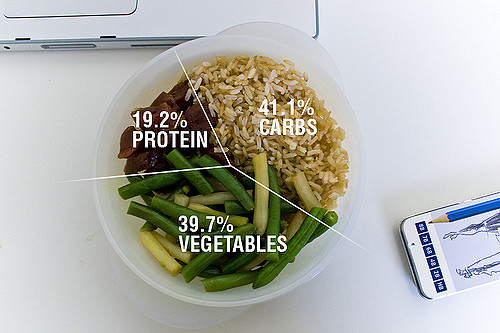
The only thing more fun than dieting is math.
The third phase embodies most popular diets on the market. Any eating pattern that emphasizes the restriction or inclusion of calories, fats, carbohydrates or proteins falls into this category/phase. And, for the fiftieth time, their may be overlap from the initial two phases (e.g., caloric restriction for life-threatening obesity, carbohydrate restriction for diabetes, or protein restriction for kidney disease).
Phase #3 is the most popular phase (and likely forever will be) because it get results. Obviously, the other two phases do as well, otherwise I wouldn’t have prioritized them early, but the diets that fall into this classification get aesthetic results (i.e., the only results shallow people like you and I seem care about).
I implied earlier that due to genetic predispositions and the demands of athletic endeavors (or, conversely, sedentary endeavors), your body’s demand for particular macronutrient ratios and daily caloric intake might be completely different from that your peers’.
Before going any further, we should probably take a moment to briefly define a couple terms. Let’s…
Caloric intake: Put simply, how many calories you eat in a given time frame; most commonly measured in days. Calories are the units of energy that give you the sustenance needed to stay moving, and keep your autonomous biological functions (e.g., respiration, digestion, and cellular maintenance, etc) online.
Calories have to go somewhere. If they’re not used immediately, they go into storage. If there’s no room left in the liver and muscles, the calories are stored as fat. All things being equal, if you consume more calories than your body demands, you’ll grow (for better or for worse). And, of course, the opposite is also true.
Macronutrient ratios: There are three macronutrients that make up all foods with caloric density. They are protein (4 calories per gram), carbohydrates (4 calories per gram), and fats (9 calories per gram). Ketones and alcohol are sometimes called the fourth and/or fifth macronutrients, but we’ll leave it up to your diet to instruct you how to factor those into the equation.
A macronutrient ratio is simply the proportional breakdown (as represented by a percentage) of proteins, carbs and fats, relative to your total caloric intake.
Here’s an example of a macro split common for building lean tissue: 40/40/20
It can also be written 40%, 40%, 20%. Or, 40% carbohydrates, 40% protein, and 20% fats (the respective order may vary).
On a 2500 calorie diet, the breakdown would be: 250 grams of carbohydrates (4 cal/g), 250 grams of protein (4 cal/g), and 55 grams of fat (9 cal/g).
Everyone comfortable with what we’re talking about? Ok. That should about do it for the definitions then. Moving on…
Phase #3 eating patterns fall into two buckets:
- Those eating patterns that demand precision record keeping.
- Make darn sure that exactly 55% of your total calories come from carbohydrates, 30% come from protein, and 15% come from fat, or we’ll kill your dog.
- Those eating patterns that demand blanket restrictions and/or inclusions.
- All carbohydrates are bad. Eat as much fat and protein as you want, but if you dare eat a carb, we’ll kill your $%#&ing dog.
Of course, most of them fall in the middle somewhere, but there’s always a propensity toward one side or the other.
Which bucket is better? Ha! Unless you’re just joining us, you already know that I’m a coward, and I refuse to definitively answer anything.
I will say, however, while there are armies of successful dieters representing both sides, I lean slightly toward the former–on paper anyway. The only reason being, with precisional macro record keeping, you’re forced to keep a food journal, which will provide you with more data for future diagnostics.
Similar to addressing health conditions and food sensitivities, counting calories and/or eating for macros ratios can be a moving target. A lot depends on immediate goals, age, and epigenetics (changes in gene expression from activities such as exercise and finishing all of your vegetables).
Thus, chances are very good that you won’t hit the “perfect” macronutrient ratio or calorie count on the first go around. Chances are also good that when you find the ideal macro ratio, it won’t be ideal 10 years from now (remember my example; 30 year old Rob had a different biological makeup and lifestyle than 20 year old Rob).
Because the hunt for ideal measurements is always evolving, it’s critical that during this phase, you track your meals and employ the diagnostic approach that we discussed in earlier sections.
I recommend tracking your food in an app like MyFitnessPal. I’m not going to offer a tutorial (it’s very intuitive, and there are already countless tutorials available). I will, however, say that the more you use it, the easier it gets to track your food intake.
If you use MyFitnessPal, be sure to take advantage of UPC scanning, saved meals and recipes, and importing recipes from websites. Even though you shouldn’t necessarily eat the same thing every day (for reasons discussed in Phase #2), you’re bound to have repetitive patterns. Rather than retyping the same recipe and meal every time you consume it, you can log it all with one click (i.e., choose a saved meal). Get the leg work done early, and the logging process will soon become painless.
It can take your body a little bit of time to adapt to the proper utilization of the energy you’re feeding it. Your body likes being comfortable–it was designed to hang on to what it has. For example, if it’s been depending on fast-acting carbohydrates to fuel its function for the last 40 years, it’s going to get very pissed off when you take them away.
Likewise, when you stick to a newly adopted diet long enough to warrant results (e.g., increased muscle mass, and/or decreased fat), you need to allow your body enough time to adapt to the new you. This will help prevent the nasty yo-yo effect you hear so much about. Professional bodybuilder and record-setting powerlifter Stan Efferding refers to this notion as “owning your new weight”.
With these considerations in place, I recommend trying new macro ratios for 30 days before changing them. This rule bears exception if you’ve been practicing this method for a long time, or have an expert helping you out.
I’ve been toying with a great service lately developed by bodybuilder and powerlifter, Dr. Layne Norton called Avatar Nutrition. For about $10/month, you gain access to an interface that will intelligently design a daily calorie intake and macronutrient ratio for you. The best part about this service is that it adjusts your macros automatically, depending on your results for the week.
There are many other fantastic resources you can use for honing in your macros. I recommend picking one and sticking with it. There will always be a shiney new program that catches your eye; write it down and come back to it after you’ve finished using the one you currently have (do I sound like your mom yet?).
For many people, Phase #3 will be the end. There are certainly calorie/macro-based programs that call for specific meal timing, and in such cases, follow their guidelines. If you’ve been in Phase #3 for a while (30 days at the bare minimum), and would like to explore meal timing on your own, in conjunction with your new macro ratios, feel free to move on to Phase #4.
Phase #4: Eat to Identify Ideal Timing
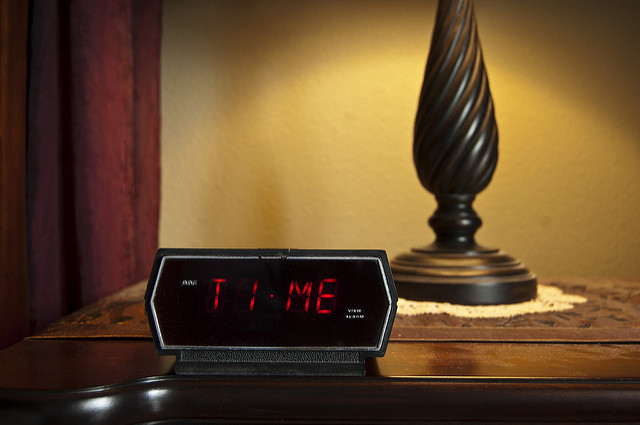
Oh crap! It’s time o’clock. I’m late!
It may take you three months, or three years to get to this point. It’s also possible you may skip it altogether. Once more, let your goals and the way you feel determine whether you need to participate in Phase #4. Personally, I don’t care what you do.
Let’s briefly recap where you are at this point, assuming you followed the first three phases in order:
- You’ve adopted a diet that helps you control the symptoms of your health condition; possibly even treat the condition itself.
- You’ve eliminated foods from your diet that were causing inflammation and other deleterious effects. Conversely, you may have determined that no foods seem to make any noticeable difference in how you feel–that’s great too.
- You now understand how different macronutrient ratios and/or how the general inclusion or restriction of particular macronutrients uniquely affect your body. Of course, all of the foods that you’re consuming within said ratios are considered safe, based on the detective work you completed during phases one and two.
Also worth reviewing:
- The phases can be pretty ambiguous. If your diabetes diet (in Phase #1) requires you to adjust your carbohydrates (a method that I’ve assigned to Phase #3), that’s ok!
- If everything that is important to you is addressed in Phase #1, two, or three, feel free to stop where you are, and adopt that diet as your new personal way of “eating healthy”.
- You can revisit these phases however often as you’d like in order to address changes in your biology and lifestyle, or simply satisfy new curiosities. Just be sure to stay true to your current data (i.e., if Phase #2 helped you determine that soy makes your man-nipples puffy, don’t try a vegan diet that features soy as the staple protein source…unless you prefer puffy nipples…personally, I think they really work for you).
Among all the eating patterns discussed thus far, meal timing (i.e., when you eat whatever it is you eat) is probably the least dependent on genetics. Moreover, the primary determining factor of meal timing–at least from my observation–is lifestyle.
What are your goals? When do you exercise (assuming you do)? What kind of exercises do you do? When can you eat? When do you want to eat? How good are you at controlling cravings? What does your diet currently look like?
That last question–what does your diet currently look like?–should be very easy answer if you’ve already endured the first three phases. There’s also a very decent chance that one of the diets that you’ve already completed, suggested, or even required some form of meal timing adherence. For instance, ketosis and intermittent fasting seem to play very well together.
For those of you who have made it this far, but haven’t yet messed with time, I invite you to give it a shot.
Diets that fall into this classification can include any of the following tweaks and patterns (again, some of them you may have already experimented with):
- Intermittent fasting
- 24+ hour water fasts/cleanses
- Pre-workout nutrition or the lack thereof
- Post-workout nutrition or the lack thereof
- Macronutrient timing (e.g., carb backloading)
As are all of the lists in this document, the one above is not all-inclusive. However, most meal timing patterns fall into one or more of them.
The weeds surrounding the topic of meal timing have been growing like crazy, and I’d prefer not to get lost in them. Therefore, I’m going to avoid them altogether. Whatever book, site, or document that you use as a reference for Phase #4 will be sure to take you through them.
I’d just like to briefly point out some applications to consider while planning Phase #4.
- Stick to what you already know about yourself. For instance, many books written on intermittent fasting also encourage the reader to adopt a high fat ketogenic diet. If you’ve already determined that, for whatever reason, you don’t do well with high fat diets (perhaps you have familial hypercholesterolemia), finish reading the book if it interests you, but consider trying a different intermittent fasting pattern.
- Consider the source of the information before you assume that the diet fits inline with your goals. Much to the distress of bodybuilders everywhere, there is some evidence to show that not eating after a workout can actually increase anabolic hormone levels. Readers look at an author who promotes this information like Mark Sisson–an exceptionally fit and healthy person (not to mention intelligent), and assumes it automatically makes sense for their lifestyles. This may be an appropriate strategy for the average healthy human with average healthy performance standards, but for a competitive strength athlete, skipping post-workout meals, and waiting for glycogen stores to top off gradually, might be a recipe for disaster. Take a look at the people who promote the diet you’re considering, and ask yourself if they fit the prototype you desire.
- Consider strongly whether or not you can play nicely within the confines of the prescribed feeding window. If you’ve already determined, by completing one of the previous phases, that you cheat badly during cheat days (like the filthy little cheater that you are), approach an evening carb backloading window with extreme prudence. I’m not necessarily discouraging you from flirting with your weaknesses–just take it easy.
Some trainers and dieticians will tell you, meal timing is everything. That’s their opinion…and it’s not necessarily a bad one. Even subtle tweaks can make significant changes in performance and body composition.
It can be the difference between a 12% and 10% body fat measurement (which is two percent, if you’re doing the math at home). It can be the missing piece that allows an athlete to work in an extra day of quality training. It can be the factor that enables someone with a serious weight problem to eat reasonably without feeling like they’re starving themselves. It can even be employed as a strategy to help a cancer patient muffle the side effects of chemotherapy.
There is indeed power in meal timing. However, there’s also power in knowing what foods, and how much of them will either help or hinder your goals–regardless of when you eat them.
Meal timing can be a huge factor, but I strongly recommend delaying experimentation until you complete the previous three phases…unless a diet from a previous phase requires it…yeh, I know I said that already, but it bears repeating…I have no way of knowing whether or not you’re dumb.
Bringing the Phases Together
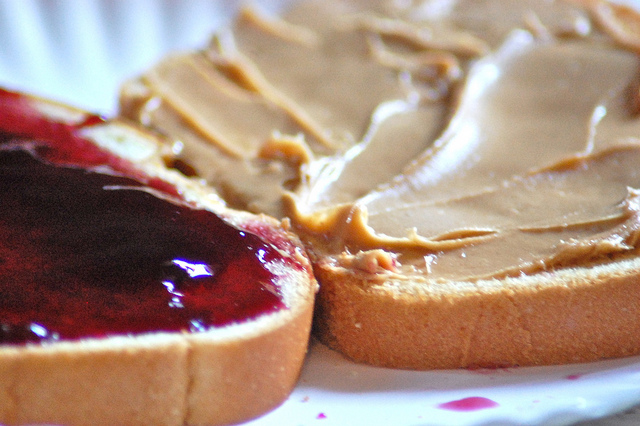
This is supposed to represent two things coming together…it also represents the fact that I’ve stopped trying to find relevant images for this document.
During my earlier monologue, I selfishly pissed away your time, ranting about my personal experience with nutrition. If you were paying any attention, you likely noticed that I’m a huge hypocrite–I didn’t even come close to following the order of operations outlined in the phases above, which is probably why it took me over 10 years, instead of three or four months to find the right diet.
Toward the end of that monologue, I briefly outlined the way I currently eat. I eventually arrived at a comfortable destination, but the road I took to get there was a mess. Here’s an example of a road traveled by someone smarter than me; someone guided by the four phases:
Ode to Joy
Joy wants to lose weight.
Several years ago, she heard a frightening story about a personal trainer who was pushed into traffic by an irate client; a client who failed to accept that establishing a healthy diet was key to his weight loss. She also heard that the trainer now has multiple buttholes; something she relates to in a very distant way on account of her irritable bowel syndrome.
Fortunately, the trainer’s ill-fate hadn’t been in vain, as Joy is now determined to find the perfect diet to suit her lifestyle and weight loss goals.
Knowing that she has IBS, she decides to ask her doctor, Dr. Googlenberg, for his diet recommendation. He recommends an elimination diet from the book The Elimination Diet.
Joy explains to her doctor that elimination diets fall within Phase #2, and that troubleshooting her IBS is a Phase #1 strategy.
Dr. Googlenberg sternly reminds Joy that overlap often occurs between phases (something he learned from his required reading of Rob Shoecraft’s How to Find the Perfect Diet during med school), and is perfectly acceptable as long as the intent coincides with Phase’s objective, which in this case is treating her IBS.
They discuss her current diet, and cross-reference her most frequently consumed foods with those on the IBS culprit list. Upon doing so, she decides to eliminate caffeine and nuts for several weeks in order to observe their effects on her IBS.
The first week without caffeine is a living nightmare, and she feels like garbage. She remembers Rob’s wise words when he discussed the importance of paying attention to how you feel.
Because she feels miserable, she almost quits before finishing the first week…that is until she remembers Rob’s other wise words; initial feelings of discontentment often pass in a few days. See the diet through, then make a decision. The caffeine withdrawal symptoms soon pass, and by the 10th day, she barely misses it.
She doesn’t really miss nuts either (deez nuuuuuutz…sorry, just had to do that once). Every day, for years, Joy put fruit, walnuts and sometime pecans in her breakfast yogurt. Despite the daily ritual, however, she’s doing just fine without the nuts…really fine, in fact.
During the first two weeks of kicking coffee and nuts, her IBS symptoms decrease dramatically, and despite not making any other major changes, she’s already lost four pounds (likely due to a decrease in IBS-related stress and inflammation)!
Excited about her progress, she starts working out three days a week, drinks a gallon of water every day, and cuts refined sugar from her diet. She continues this trend for eight weeks, and loses another 15 lbs, and she barely notices her IBS symptoms anymore.
She introduces coffee back into her diet first (turns out she really did miss it). Odd…no IBS symptoms.
Joy starts to get a little pissed…she went without her black nectar for almost three months, and seemingly for no reason!
Calm down, Joy.
Joy calms down. She changes her perspective, and finds delight in the fact that she can safely fire up her caffeine addiction again with little-to-no consequence. The amazing virgin coffee buzz she’s currently enjoying also changes her outlook.
A week later, she eats a couple handfuls of nuts…and within hours, she produces a couple handfuls of diarrhea (in medieval times, units of stool were measured by the king’s hands).
Although it was nice to have diarrhea again, she knew that if she continued to eat nuts, it would throw off her amazing progress. She decides to continue her nut abstinence.
Joy chooses to hold off on progressing to Phase #2 for now, which is perfectly acceptable; she’s feels pretty darn good, and the weight keeps coming off, albeit more slowly.
Two months go by, and she loses another 11 lbs, just doing what she’s been doing. She’s noticed, however, that she hasn’t lost any weight in the last two weeks, and she still has a long way until she reaches her ultimate weight loss goal. Plus, she hasn’t really been feeling like her perky self lately…maybe the progress plateau has her down a little; maybe it’s that caffeine is no longer novel; or maybe it’s something else entirely. She decides it’s time for Phase #2.
Joy borrows a copy of the Whole 30 from a friend, and starts in on the diet. She is no longer eating much refined sugar, so the diet isn’t a total shock to her system. It is, however, a struggle to go without her morning yogurt, French bread with her soup at lunch, and the occasional glass of red wine in the evenings. That said, she sticks to her guns.
After a successful month on the diet, she finds herself with more energy, and she lost another 8 lbs. Nice, Joy.
On the first night off the diet, she treats herself to a stout glass of red wine…thank goodness! No noticeable side effects.
How about the yogurt? Nope, seem to be good there too. Cool.
French bread (i.e., gluten)? Hmmm…something’s a little off. Joy almost thinks she feels dumber, but it’s hard to tell. She doubles down on her experiment the next day and nearly eats an entire loaf (her soup bowl was very clean).
Oh my–that definitely did something. She doesn’t feel nearly as sharp, and when shaving her legs that evening, she notices that the dimples on her shins left by her fingerprints,aren’t going away. Almost as excited as she is disappointed, she hops on the scale, and stares at it in disbelief. She has nearly gained 3 lbs in a single day!
Joy deduces that she has a mild gluten intolerance, and decides, from this point forward, to only consume it sparingly.
After a couple days of abstaining from gluten, she drops the 3 lbs that she gained earlier in the week–whew! Back in the game, and high on her success, she barrells right into Phase #3.
This Joy story is getting really long (so is this document), and I think you get the gist of the example, so I’ll try to wrap it up in the next couple paragraphs…that is unless I get on another diarrhea kick.
Joy tries a popular ketogenic diet (without nuts and gluten, of course) for three months and continues to lose weight, however, not at the pace she had hoped for–after all, her husband lost 300 lbs in eight days. She still has 20 more lbs of fat to lose before she reaches her arbitrary goal, and at this rate, she isn’t sure she ever will.
Having given ketosis a legitimate shot, she decides to try a new Phase #3 diet. She signs up for a macronutrient guidance service, and uses the tool to help structure a macro ratio to follow. She gets a little nervous when she sees the amount of carbohydrates she needs to consume every day (again, gluten-free carbohydrates in her case), but drives forward anyway.
The scale doesn’t really move for two frustrating weeks, then, at the end of the third week, at her weigh in, she sees a drop of 2 lbs. Then another two the next week…then another, and another…it’s working!
She concludes that, while she lost some weight on the low carb ketogenic diet, her genetics likely predispose her to greater success on a semi-restricted fat diet.
Joy is thrilled. Her energy levels are rockin’, she’s living a diarrhea-free lifestyle (which is a burden, but she knows within her heart of hearts that it’s the healthy choice), she’s crushing it at work, and she achieved the weight loss goal she set almost a year ago.
Joy has really gotten into resistance training during the last couple months, and as a result, has set new goals, both in the weight room, as well as in body composition.
Joy does some reading, and learns that the body is more insulin sensitive in the morning. She also learns the importance of post-workout nutrition (as it relates to her current diet and lifestyle). She decides to adjust her macros and daily caloric intake according to her three weekly morning workouts.
Within two months, she gains a pound, but drops a pants size. She’s also noticeably stronger in every resistance exercise she performs during her workouts.
Things really worked out for Brenda…I mean Joy…Brenda’s dead…I’m still glad.
Dieting Ground Rules
Now that you have a gameplan, let’s lay down the law on choosing a diet and sticking with it:
Choose a diet that fits your goal(s)
If you’re trying to get big, don’t start a nutrition plan that puts you at a caloric deficit just because your buddy from work is doing it. I know this sounds like a no-brainer, but it’s amazing how many people don’t consider this basic principle.
Choose one that you know won’t hurt or kill you
If you’re a diabetic, and your doctor has explicitly told you not to exceed a certain number of carbohydrates per meal, don’t adopt a fruitarian lifestyle (yes, there is such a thing).
If you have failing kidneys, stay away from a high protein diet.
You probably aren’t going to know every intolerance or nutrition-related malady right off the bat, but please consider what you already know, and make a safe decision.
Choose a program that has a following
I know that you’re not supposed to just mindlessly follow the crowd, but if a diet or nutrition lifestyle has loyal followers, it’s a probably good sign (even if they’re super, super, super annoying).
Complete the program
Your body can literally take months to adapt to some eating patterns. If the diet you choose calls for three weeks, DO IT FOR THREE WEEKS!
Actually follow the program
If the building architect asks for bricks, are you going to stack every other layer with meatloaf pans? No. The project will fail, and people will die (why all those parents allowed their children to attend a school made of bricks and meatloaf pans, I’ll never understand…).
Seriously, you do not know better than the people who put the diet together. If you modify it in anyway, you’re no longer actually doing it.
Feel free to create your own diet from what you learn from the phased approach, but as long as you’re trying someone else’s diet, you need to play by their rules.
Read the book
If a diet comes with a book (or any other accompanying literature)–especially one that insists that you read the book before starting–read the book.
I know, it’s bad enough that you have to go on a diet…now I’m telling you that you have to read too. Life’s hard, isn’t it, pal?
Don’t be so arrogant as to assume that just because you know “not to eat gluten”, you’re going to be prepared for every circumstance that the world throws at you. The authors of these books know that life gets crazy, and people fall off of wagons; take a couple hours to read what they have to say, and arm yourself with the know-how to get back on.
Are the authors trying to make a buck off of you? Of course! Who cares? The extra information is going to help hedge your bets for success. Spending $20, and having a better life is a lot better than being a lazy failure.
Get a roomie to do it with you
I’m not even talking about shared accountability here–although that is a huge perk–I’m talking about practicality.
If your wife’s cooking doesn’t jive with the rules of your diet, and you don’t know how to cook, your diet will suffer. If not eating her food will make her cry, your marriage may suffer.
It’s not impossible to go it alone, but it’s much much easier when you have a roommate in the same boat.
Get used to eating things you don’t like eating
“I don’t like vegetables!” cried you and the toddler.
Hey, I don’t like vegetables either! I also don’t like not drinking beer at breakfast. I also don’t like not eating salami and butter on a baguette at every meal. And I also love cocaine, but it’s terrible for me!
Life is full of inconveniences, and sometimes you have to do things you don’t want to do in order to get somewhere. The fact that I have to remind people of this is pathetic…it’s even more infuriating when I have to remind myself of it every day.
Don’t set yourself up for failure, but when you start a diet, find a way to finish it, regardless of how crappy success tastes without ranch.
PREP!!!!
I don’t know why I didn’t put this first (oh well…too late now).
Every diet I’ve ever done has been dependent on having meals prepped ahead of time. If I had to choose the most difficult dieting challenge, it would be consistent meal preparation. Very few diets are really all that difficult to adhere to if you always have compliant food within arms reach. But, when you don’t, you fail. Time and time again, you fail.
In order find success in your nutritional endeavors, you absolutely must prep the majority of your meals.
If you can’t cook, learn, or marry someone who can. When my wife isn’t making dinner, I know that I can cook rice, steam vegetables, and grill a steak or bake a frozen chicken–I almost always make three times as much as I intend to eat, so I can have it for lunch the next day. It’s not glamorous, but it works.
If you’re not willing to get better at life, get better at your job, make more money, and hire someone to prep food for you. There are dozens of meal plan services on the Internet and probably just as many in your local area.
One way or another, find a way to prep your meals. This is non-negotiable.
Keep a food log
This is almost a requirement anyway during Phase #3, but it’s never a bad idea to know what you’re eating. I’ve spent enough time harping on the value of data, but the more you have, the better off you’ll be.
You might not need to track your meals forever, but at least get in the practice early on until it becomes an unconscious effort.
If at all possible, don’t completely eliminate entire food groups
I plan to try full ketosis someday–I may even try the carnivore diet for a month just to see what happens, but I have trouble believing that it’s ok–as a long term practice–to completely eliminate entire macronutrients from your diet. Call it a hunch.
Now, having said that, you have to weigh the good with the bad. If you suffer life-threatening grand mal seizures every time you eat a carb, don’t keep eating carbs because some jackass from the Internet (me), who’s not even a dietician, said that he had a hunch.
I’m just saying be careful. Use the diagnostic techniques we discussed earlier to keep an eye on things…maybe even get some blood work done every now and then.
Drink lots of water
Unless otherwise specified, try to drink .66 ounces of water per pound of bodyweight every day (got this little rule from Joe Defranco).
For instance, I’m about 250 lbs, so I make sure that I drink at least 165 ounces (or 1.3 gallons) of water every day. I don’t care if the research on daily water intake is inconclusive…everything works better when you’re well hydrated.
Just make sure you consume plenty of salt during the day if you’re really slugging down the H2O (salt has a bad rap mainly because people are idiots).
Eat plenty of protein
If the diet doesn’t specify, and you don’t have a prohibitive health condition (e.g., kidney disease), eat lots of protein. How much is a lot? That depends who you ask.
If you’re participating regularly in a resistance training program (i.e., lifting weights, doing push-ups and pull-ups, playing an intense sport, etc), try to eat between .7 and 1 gram of protein per pound of bodyweight.
“But I’m 200 lbs! There’s no way I can eat that much protein!”. Fine–don’t.
If you ever decide to get over yourself, remember that you can supplement with protein powders, and essential amino acid pills and powders as well.
And speaking of amino acids, if you’re vegan or vegetarian, be sure to eat a complete protein profile (e.g., eat beans with your rice, etc), or again, supplement accordingly.
Try the diet for at least 30 days
If the diet says to go four months, go four months. If it says you only need to do it for three days, go three days. If, however, it doesn’t really give a definitive duration, try it for at least 30 days. This won’t satisfy every possible physical adaptation, but it will “work” in most cases.
Stay away from refined sugar
I honestly can’t think of any diets that encourage you to eat refined sugar…a bodybuilder looking to trigger an insulin response by mainlining dextrose after a workout is about as close of an example as I can come up with.
That said, unless your diet allows you to eat refined sugar, keep it to a minimum. The stuff is garbage and no good comes out of eating it. In fact, the simple rule of not eating refined sugar would probably work miracles for 90% of Americans.
Yeh…actually…there ya go…forget all the stuff I’ve said so far…just quit eating sugar.
And, yes, I saw What the Health?…
I also saw Battlefield Earth…what’s your point?
Spit, Pee, Poop and Blood (the EASIER WAY)
“I really appreciate you taking the time to write out all the phases and rules and stuff, and Joy sounds pretty cool…but…it still looks really hard. Isn’t there an easier way to find the perfect diet?”, you ask annoyingly.
The phases are a near-surefire way to help you establish the perfect diet (if there is such a thing), but I admit, it takes a lot of time and discipline to get through them.
There is an easier way.
It boils down to leveraging science. Basically, you take a bunch of saliva, urine, blood, and/or stool tests, and hone in directly on your “perfect diet”. It allows you to speed through all the aforementioned phases (not skip them entirely), and potentially save yourself a few months of guesswork.
I use words like “diagnostics”, “experimenting”, “testing” and “data gathering” extensively in this document, yet, for the most part, the methods I’ve outlined so far aren’t really based on hard science…more like common sense.
For instance, you can be pretty sure that you have a gluten allergy if eating spaghetti after 30 days of abstaining from it gives you diarrhea (whether you enjoy having diarrhea or not). Moreover, it’s a safe bet that if your goiter shrinks in two weeks after adhering to a thyroid diet, you’re on the right track.
Becoming intimately aware of how your diet affects the way you look, act, and feel is a perfectly legitimate way of pushing toward your full wellness potential–I wouldn’t have wasted 20,000 words talking about it if I didn’t believe it to be true. However, it’s not for everyone…well it is…but not everyone allows it to work for them.
The spit, pee, poop and blood method is for people who want to eliminate as much guesswork as possible upfront. As long as they’re willing to spend a little money, it can be a winning approach.
Here’s the self-quantifying, science-based, spit, blood, poop and pee testing model in a nutshell:
You elect for a series of tests done either through your doctor, and/or though independent labs (depends on your doctor, as well as the tests themselves). These tests can tell you any of the following (and, of course, much, much more):
- Genetic predisposition to fat loss (i.e., will you do better on a low-fat or low carb diet).
- Micronutrient deficiencies (both actual and likelihood suggested from genetic biases).
- Heavy metal toxicity, which can cause severe health issues across the board.
- Gut biome. The presence of harmful and helpful bacteria, which can influence everything from BM regularity and fat loss, to skin conditions, emotional health, and sleep quality.
- Food intolerance, allergies and sensitivities.
- Hormone levels and imbalances, which have a significant effect on body composition, and can be treated to an extent with diet and specific supplementation.
Once you have your results, you can start experimenting with diets accordingly. I still recommend that you prioritize your diet selection with the Four Phase model discussed earlier. For instance, if heavy metals tests reveal accelerated cell degeneration from mercury poisoning, you should probably start a diet to clear the mercury from your system before you worry your carbs.
For a deeper dive into this model, I recommend the following article: How to Get Started with Self-Quantification.
Here’s the rest of my commentary on the subject
I’ve chosen to use bullets instead of free paragraphs in hopes that it forgoes any further directionless rants…this document is way too long, and I want it to end almost as badly as you do:
- I’ve only flirted with this method (I’ve had some genetics testing done through 23andme, and that’s about it), so I have very little firsthand knowledge. I just happen to know that it’s super legit, and only getting super legittier.
- You don’t have to get every test completed, but the more information you have, the better. Purchase what you can afford at the time, and budget for future tests (that’s what I’m doing anyway). In case you’re wondering, my next test will probably be a Cyrex Array 10 food autoimmunity test–last I checked it was over $1K (The Whole 30 book was $15).
- These tests aren’t magic pills…they’re just a way to get more precise information faster. Think of these results as a diet/wellness book written specifically for you. Just because most of the guesswork is done up front, doesn’t mean that everything else is easy. You still have to establish good habits, self control, and reluctantly prep your meals.
- Choose one–at a maximum–two experts, sites or services to follow when you begin down this path. Otherwise, you’ll spend just as much time crawling out of research rabbit holes as you would have spent trying half a dozen diets. For what it’s worth my go-to guy is Ben Greenfield.
- Again, these tests cost money–lots of money, and most are not covered by insurance. If you have more than lots of money, hire a functional medicine doctor to conduct and interpret the results for you; preferably one who will also design a meal plan for you (or refer you to a registered dietician who will), and continue to objectively monitor your progress. You can find a list of functional medicine practitioners here: Find a Practitioner. Also, here’s Dr. Tom’s site (I referenced Dr. Tom earlier–he’s an FMP I’ve followed for a couple years): Nutrition Treatment Center
- Very few test results are 100% accurate. Last I checked, for instance, the Cyrex food allergy test is 90% accurate, which is–all things considered–still pretty amazing. Also, the information that you get from genetics testing (e.g., 23andme and DNAFit) will be even less accurate. Essentially, your results reflect findings that have been extrapolated from folks who share similar genetic traits. That said, the probability of findings and lifestyle suggestions found in most genetic testing reports can vary significantly. Again, some validating experimentation (feel free to employ the Four Phase approach) is strongly encouraged. In my opinion, for just $99, the data you can gather from a genetics saliva test–albeit potentially inaccurate–still beats shooting blindly from the hip.
Once again, my self-quantification chops are on an amateur level at best, however, I fully recognize the benefits these test results can offer. Thus, I’ll continue to invest time and money into geeking out on them in the future. I encourage you to do the same if you have the inclination and the means to support it.
In Conclusion
Sweet Sajak! We’ve reached the end.
I’ve already placed a nice synopsis at the beginning of this document, so this conclusion is really just a formality. I’ll leave you with these words as they flow off the top of my dome:
As it relates to your personal nutrition, and finding the perfect diet:
Be accountable. Be diligent. Be patient. Be an explorer. Be healthy. But once you find the perfect diet, please don’t be annoying.
[activecampaign form=1]
